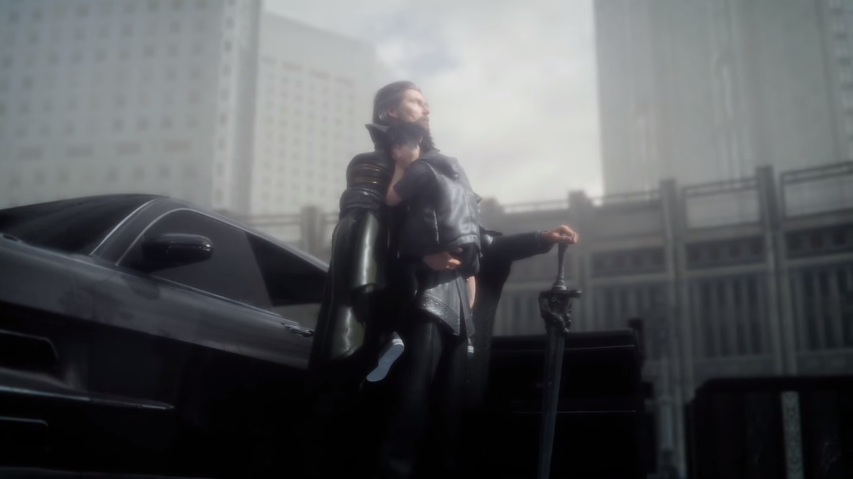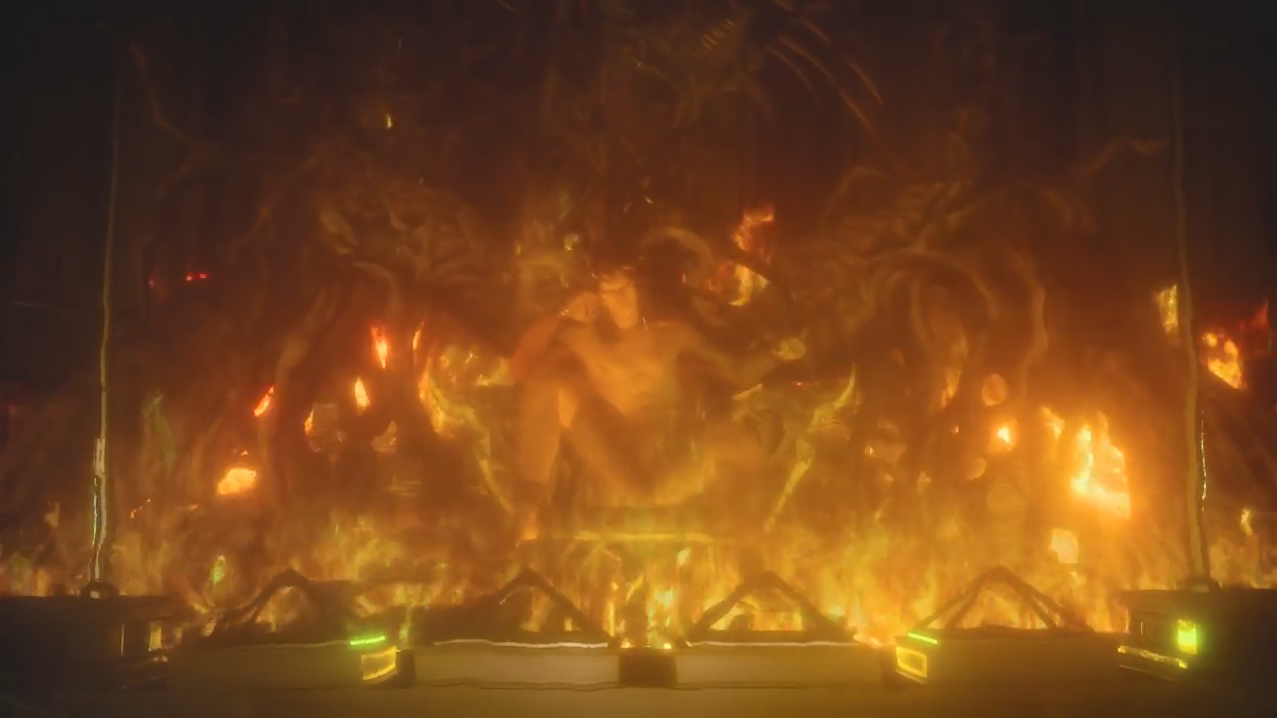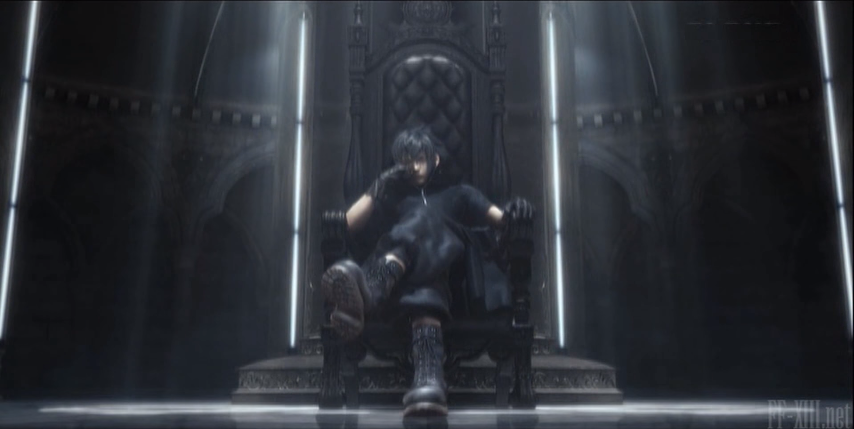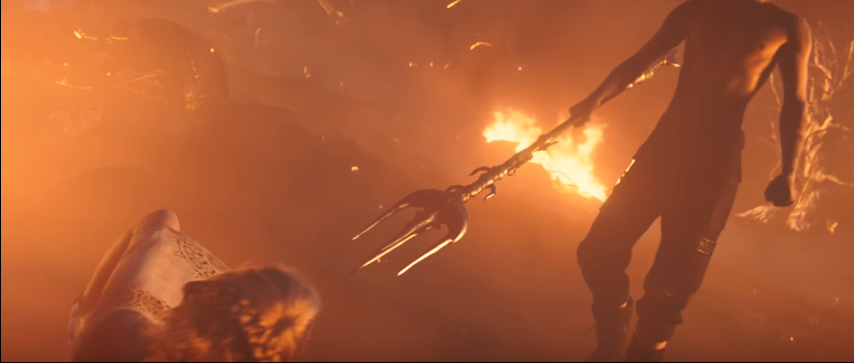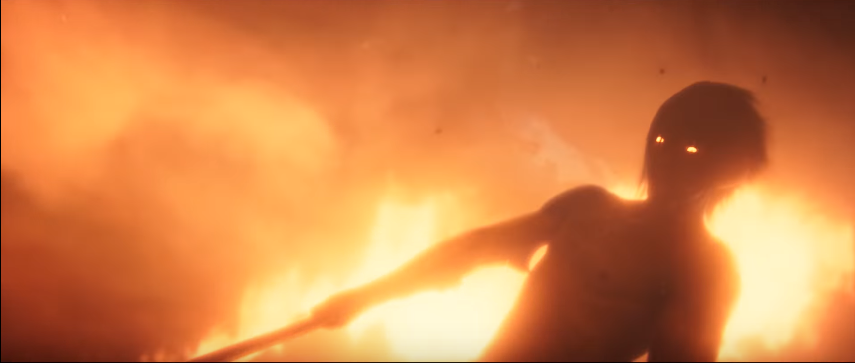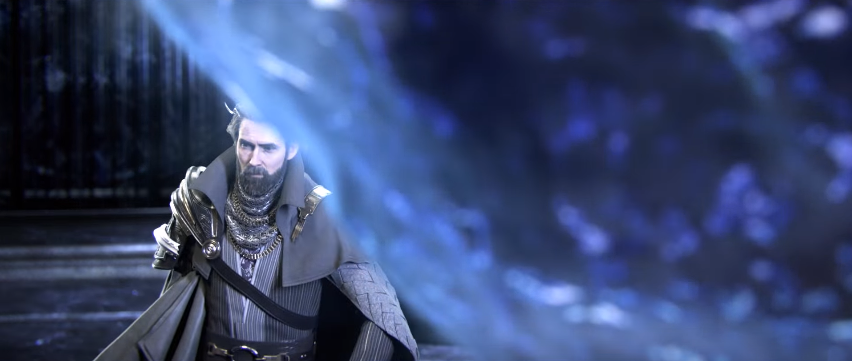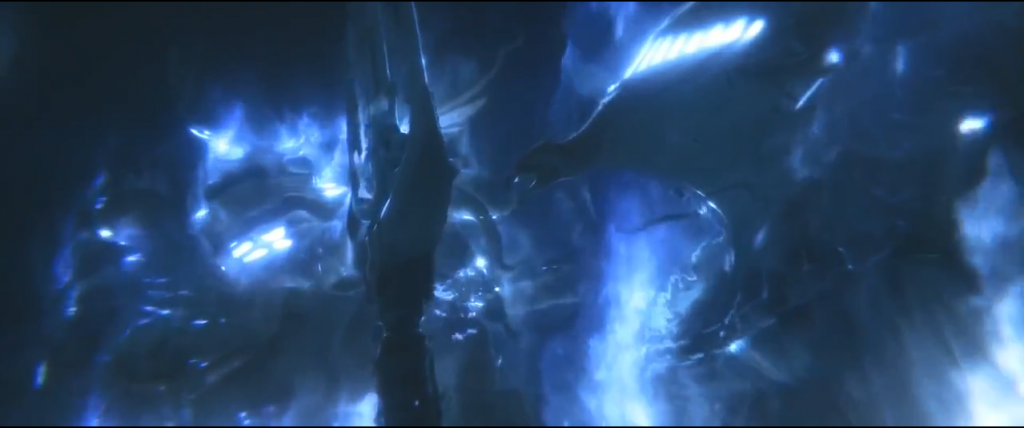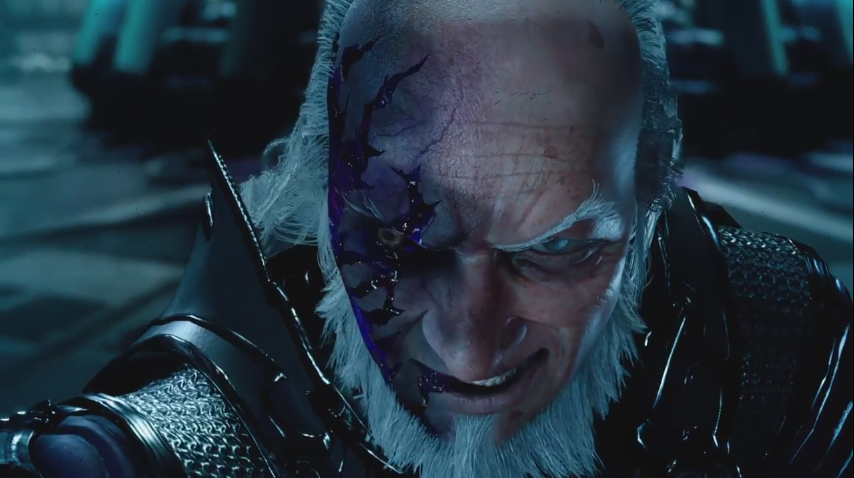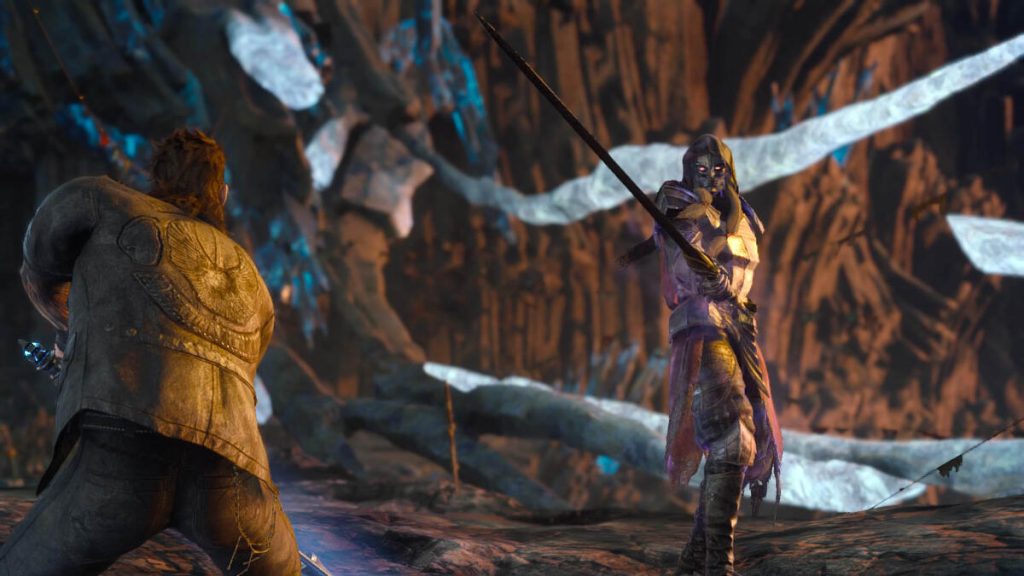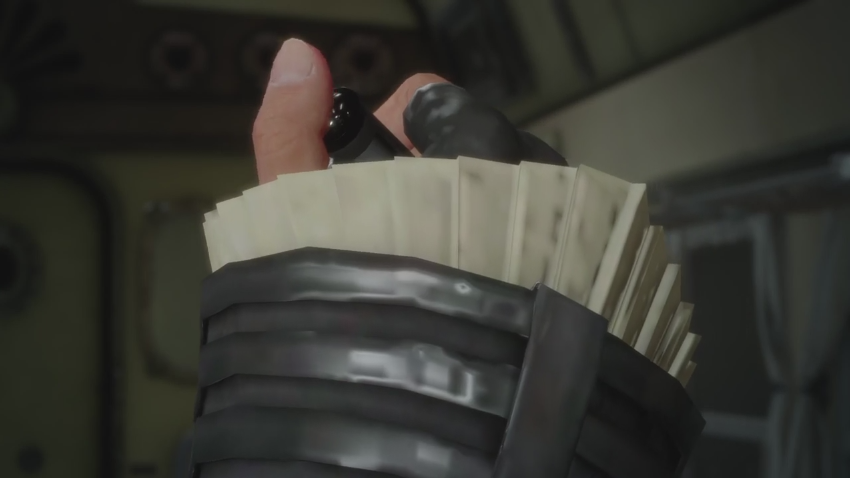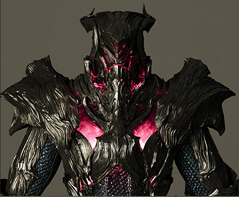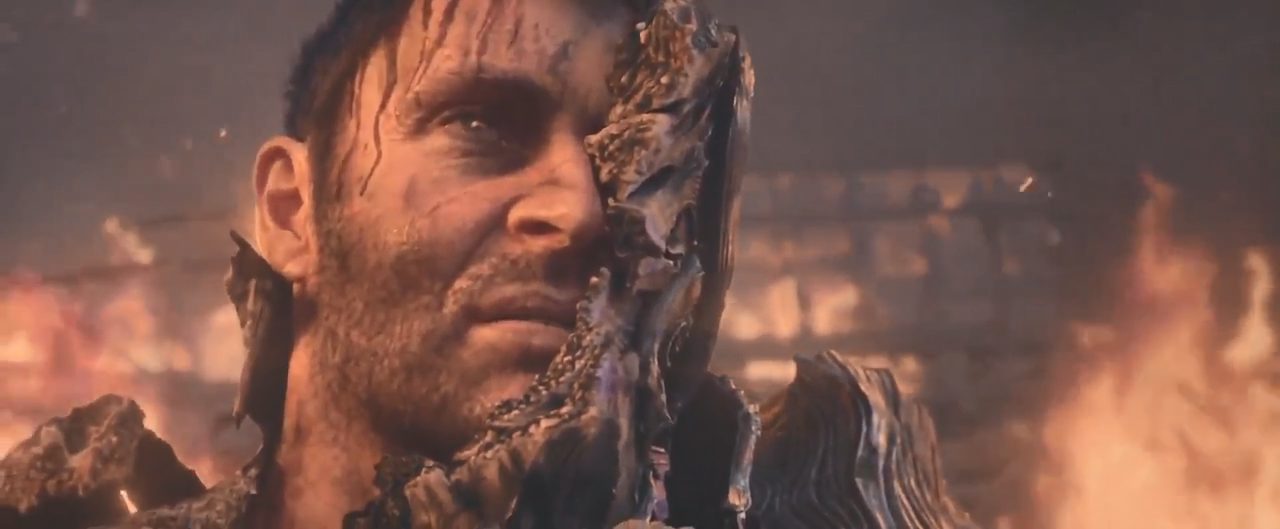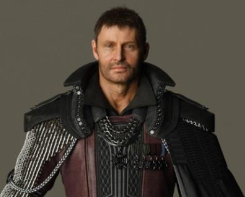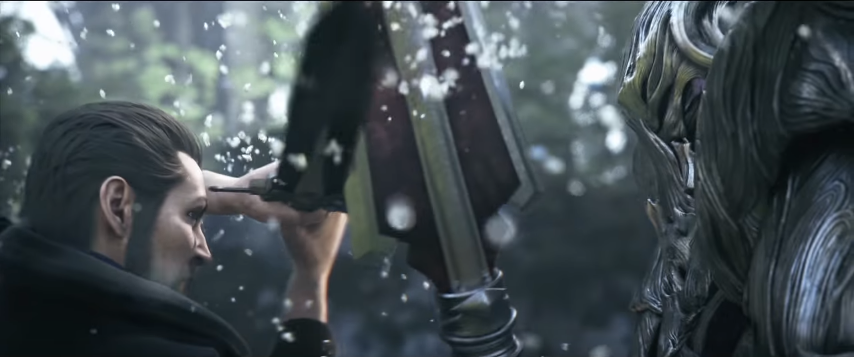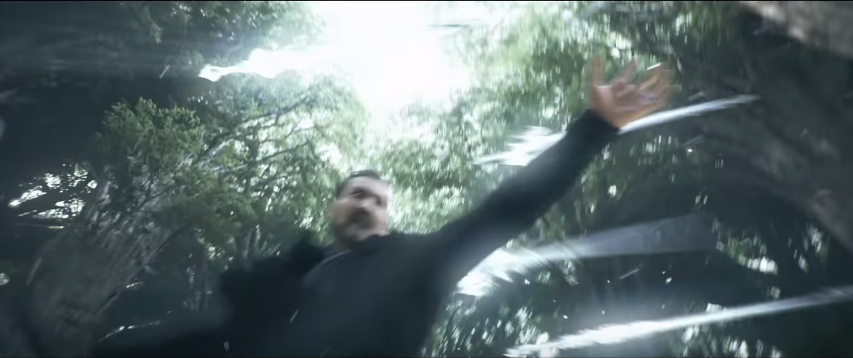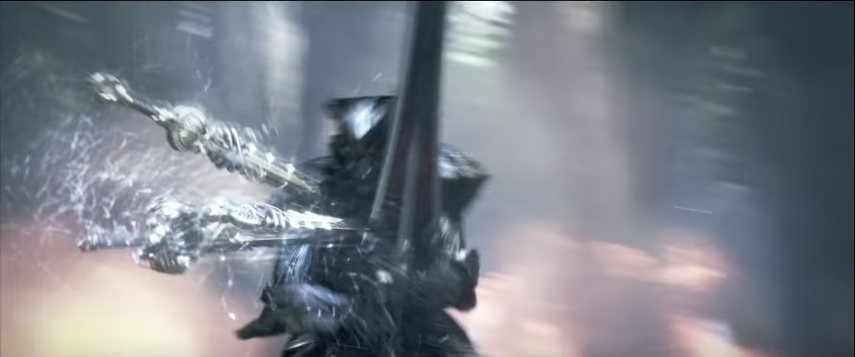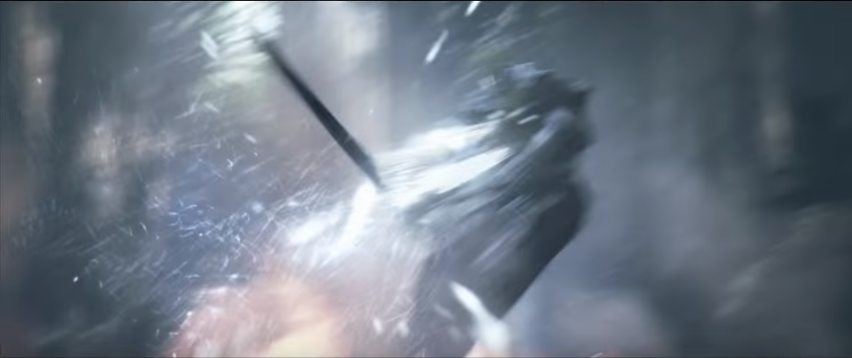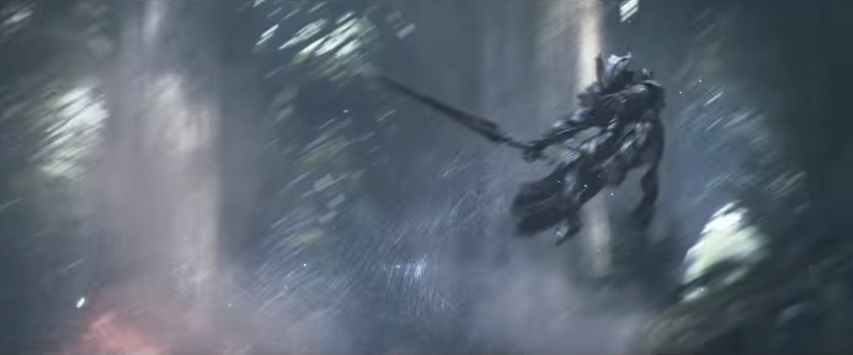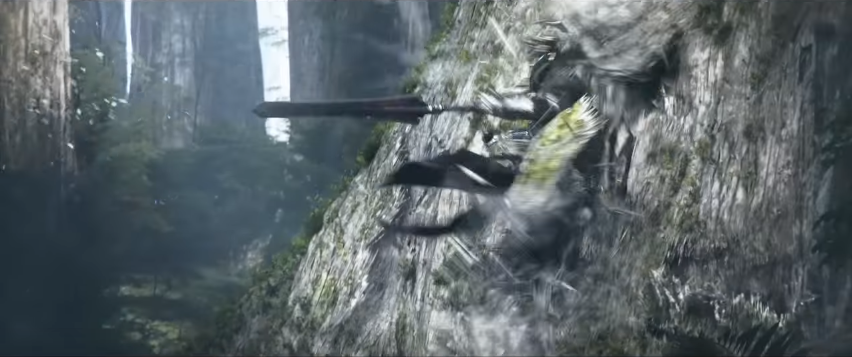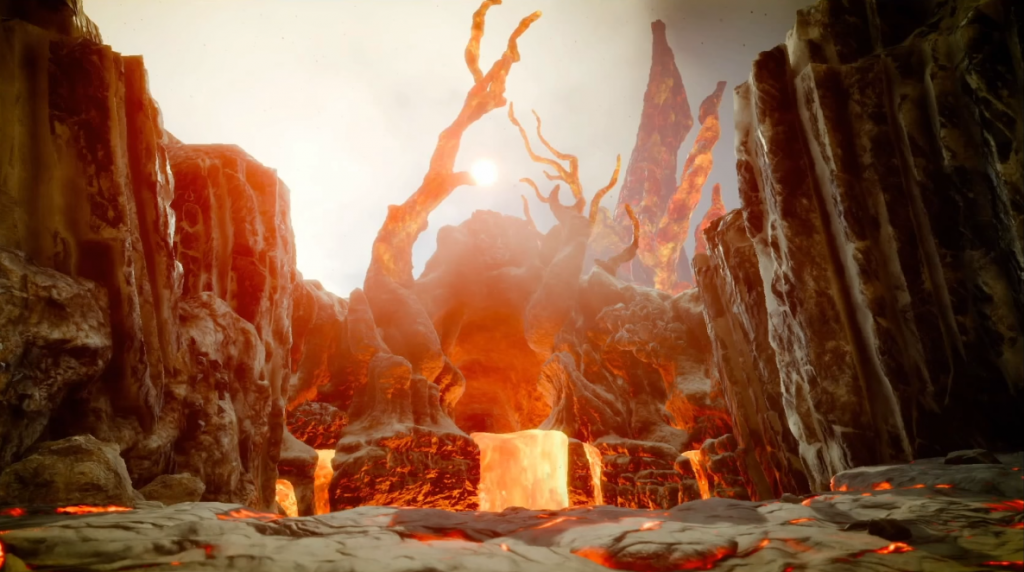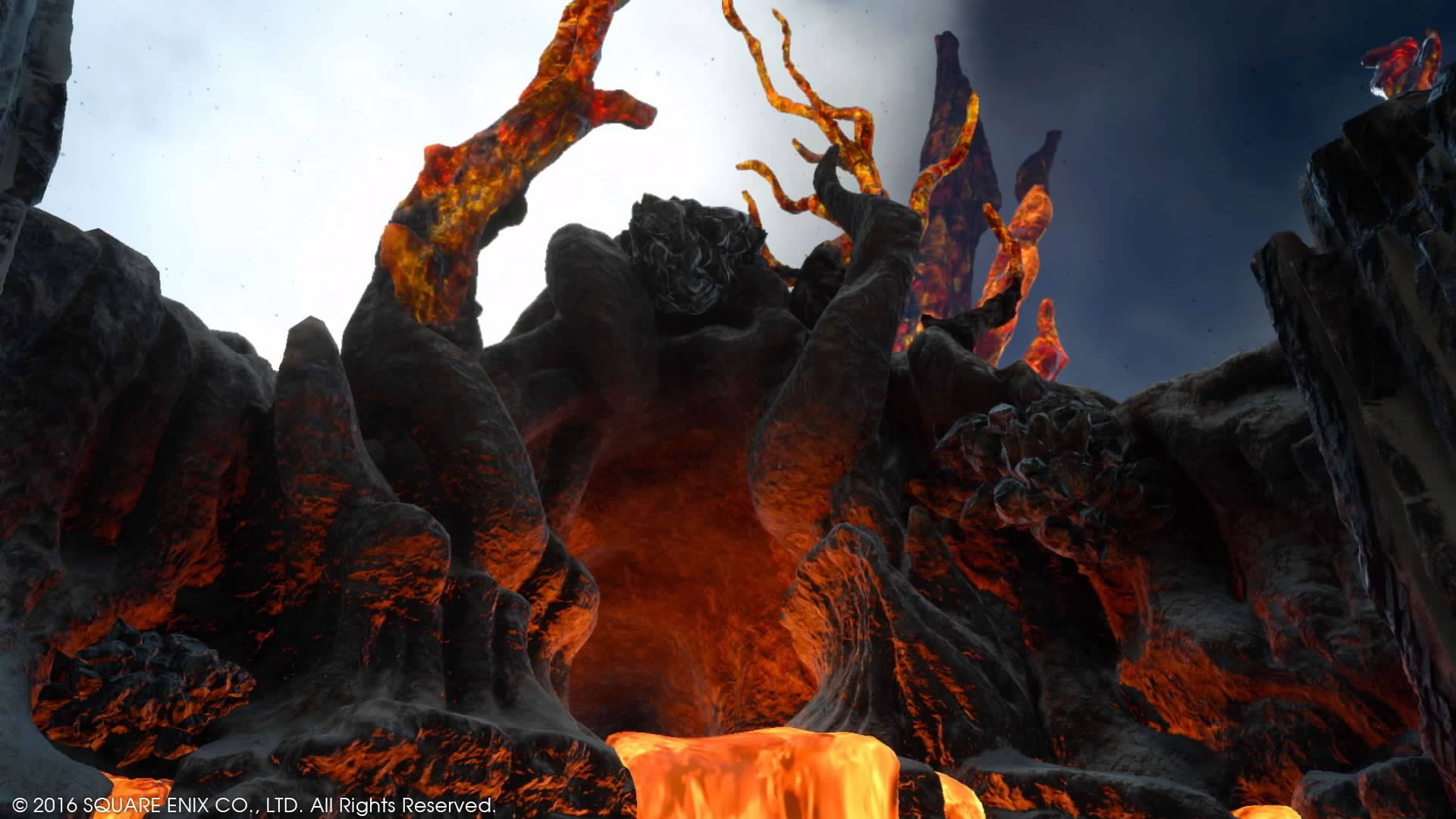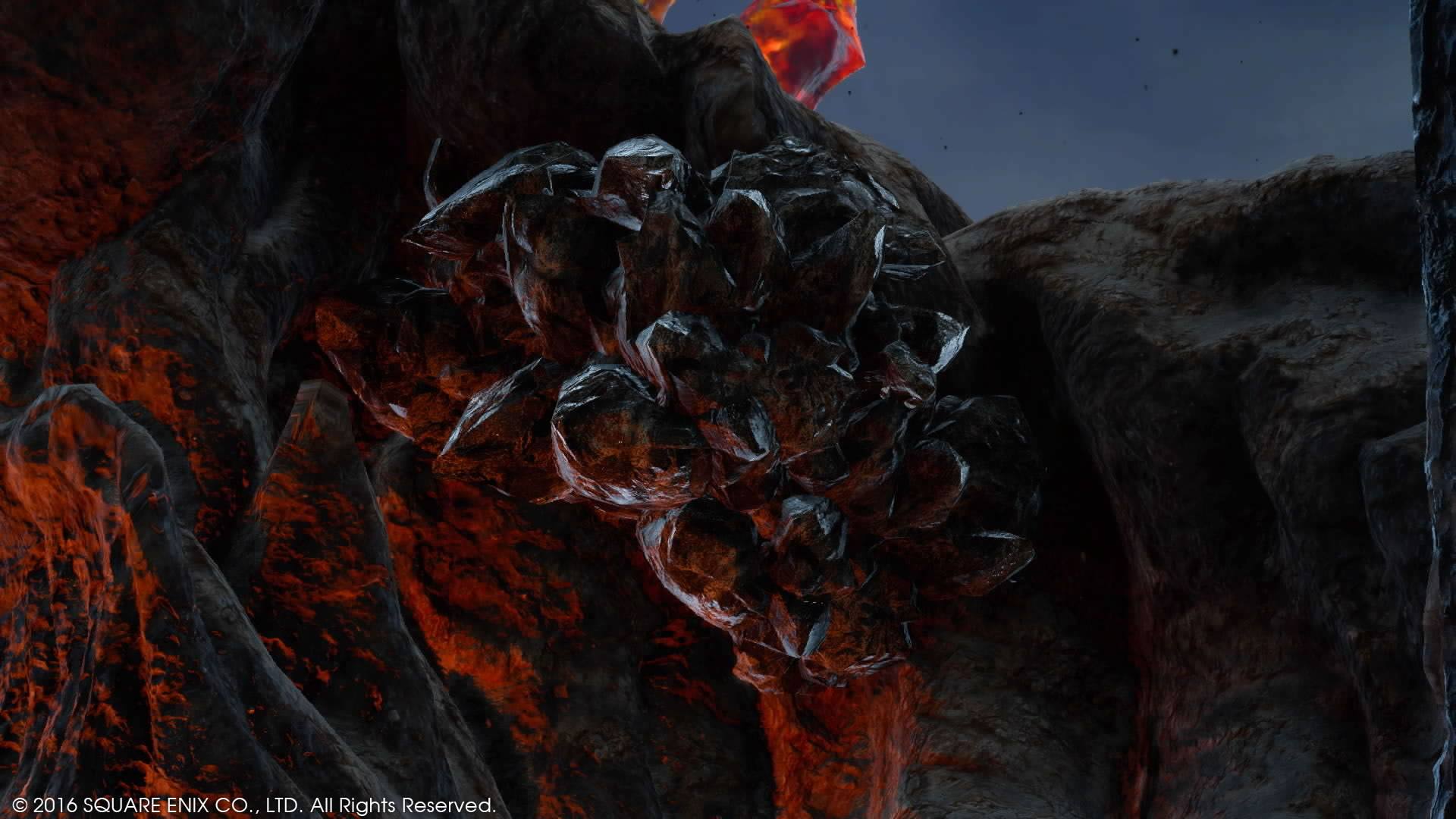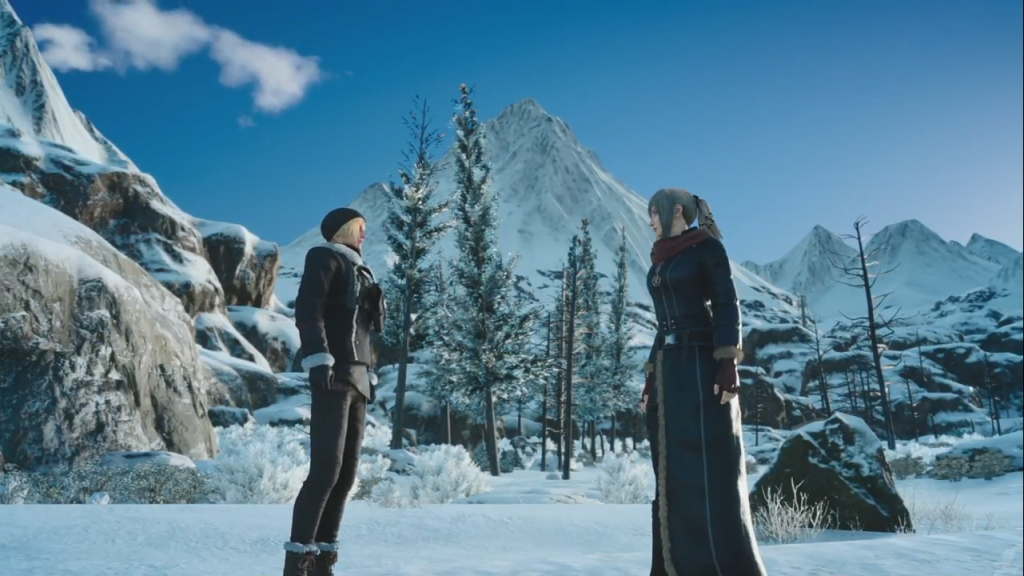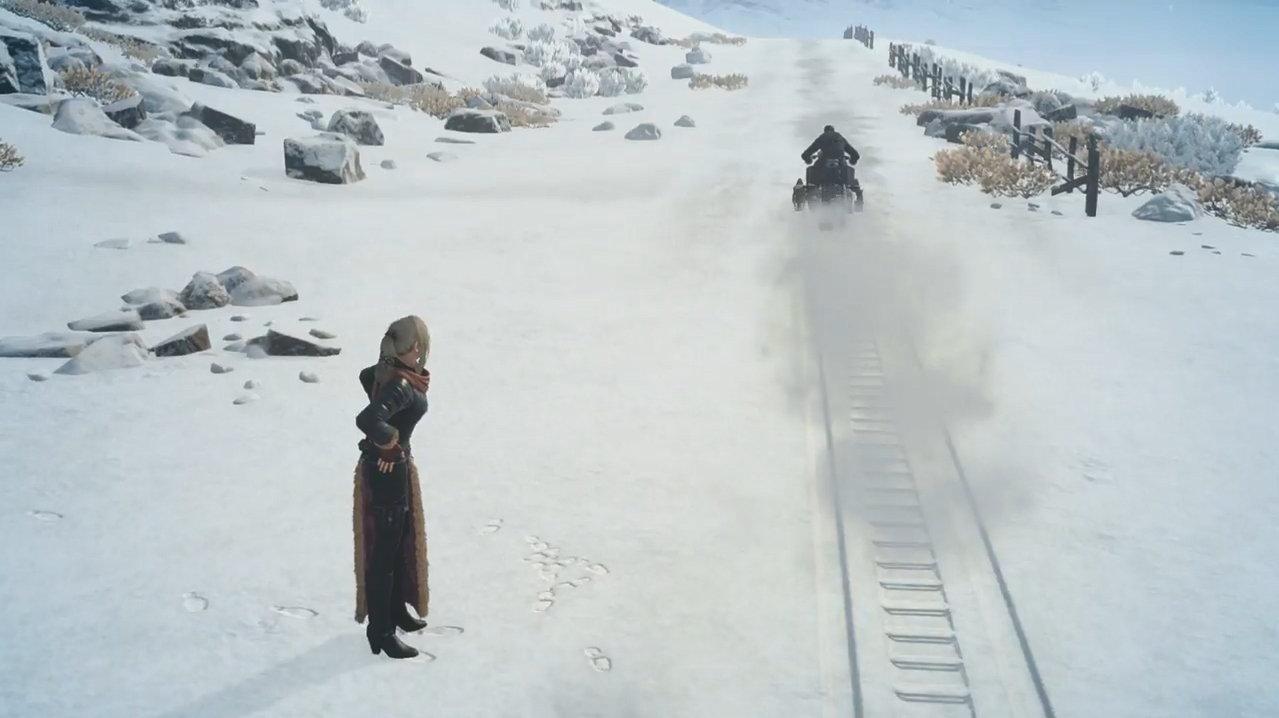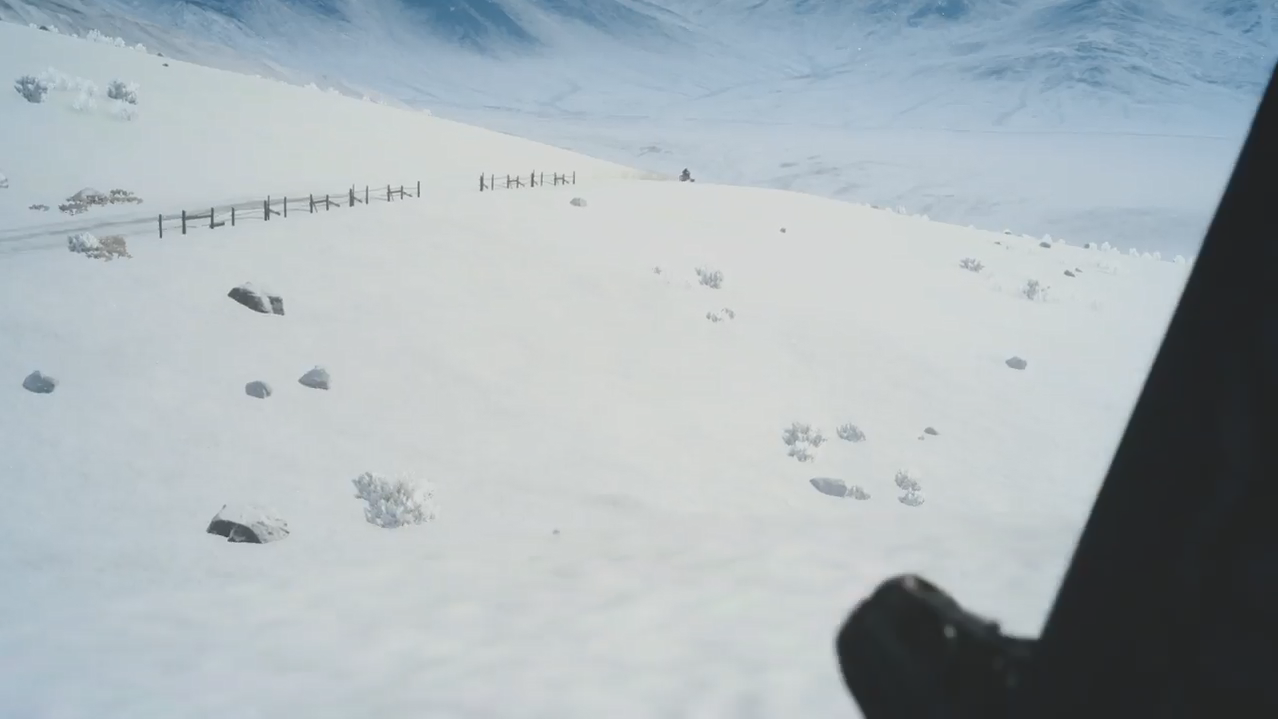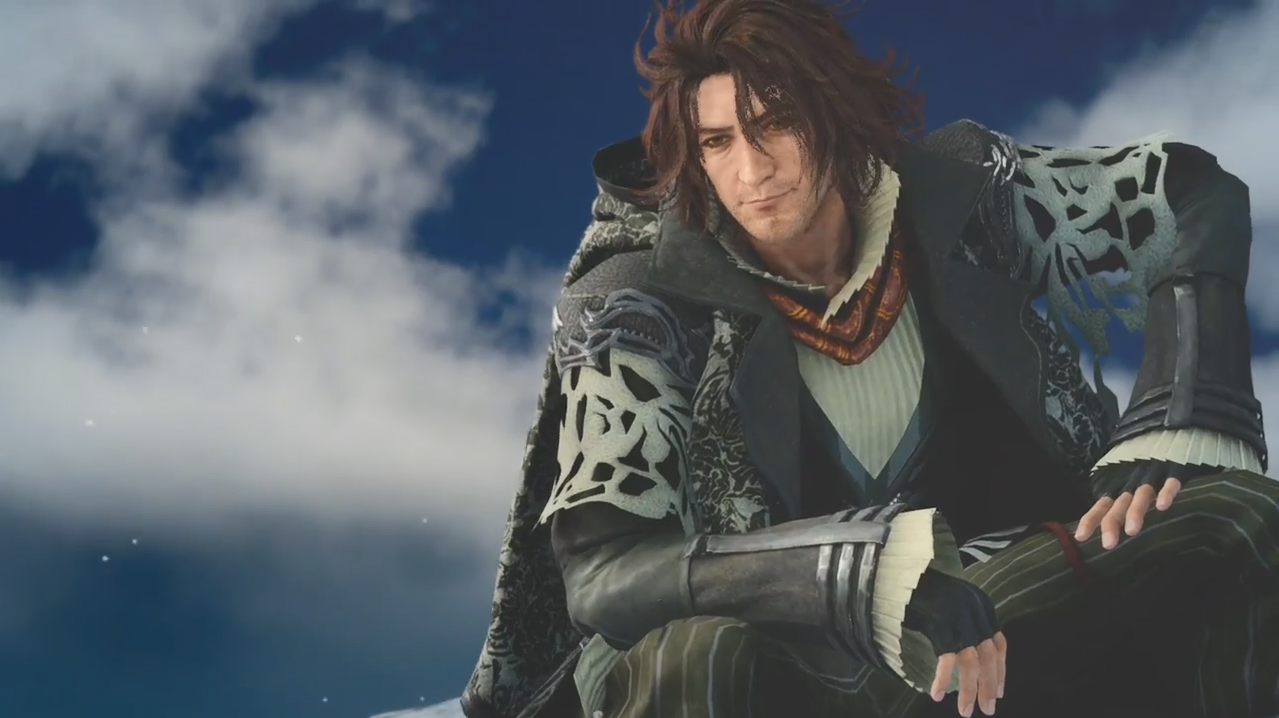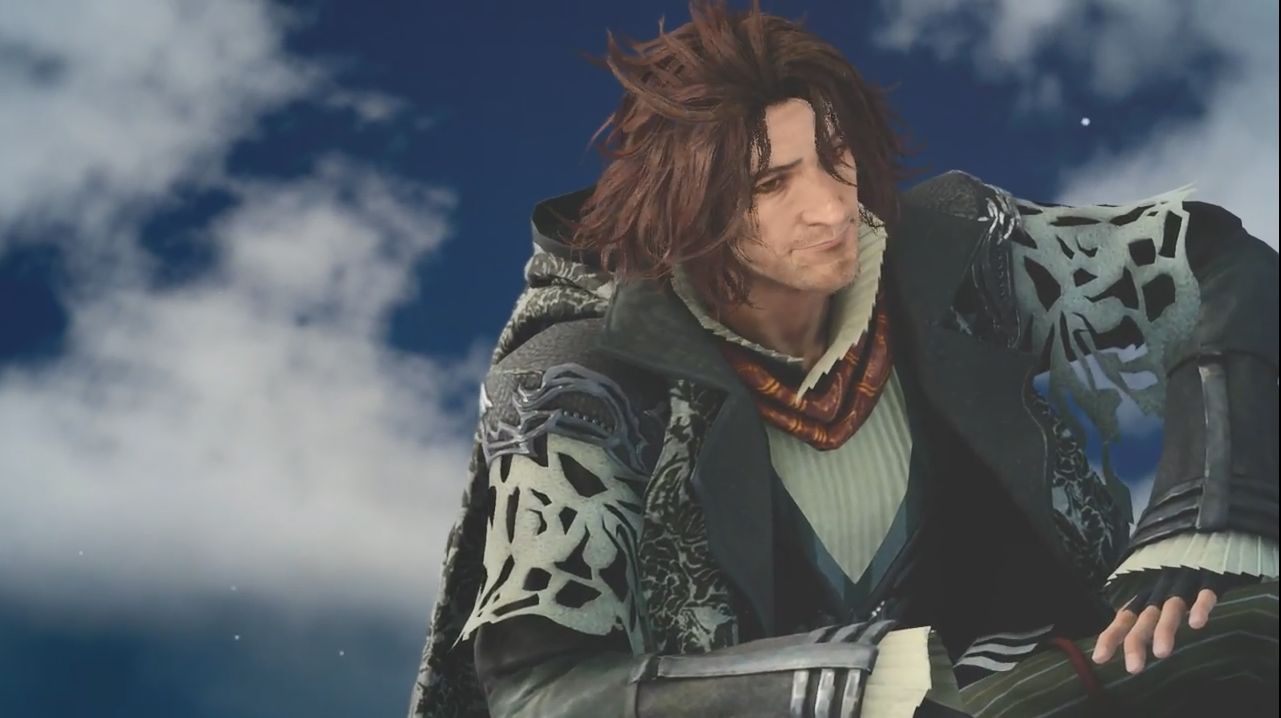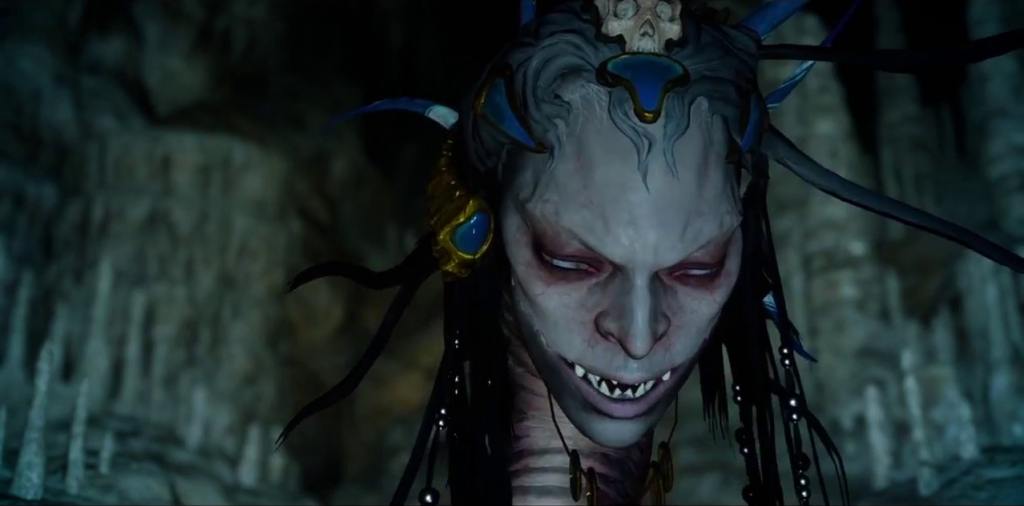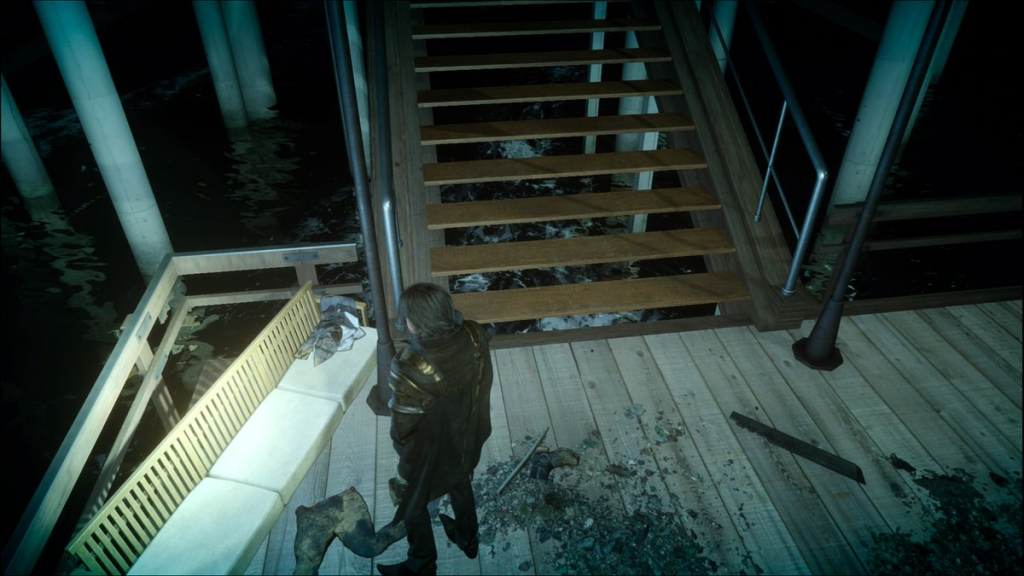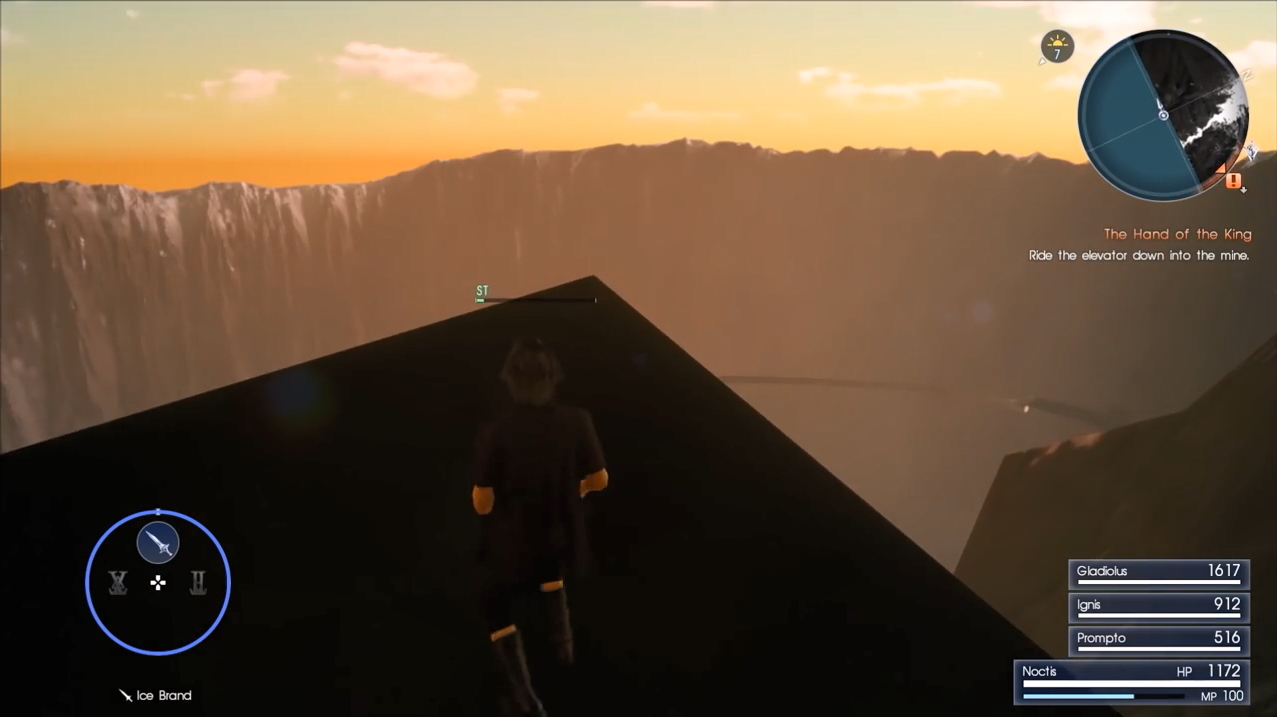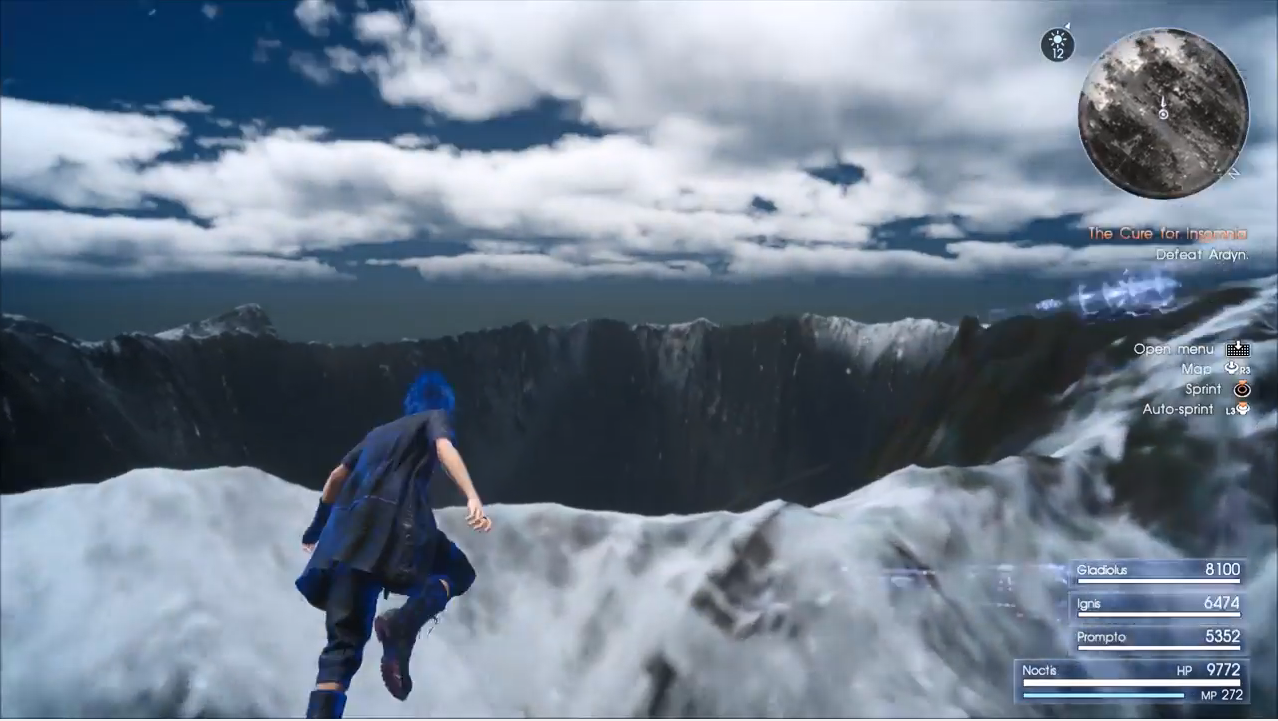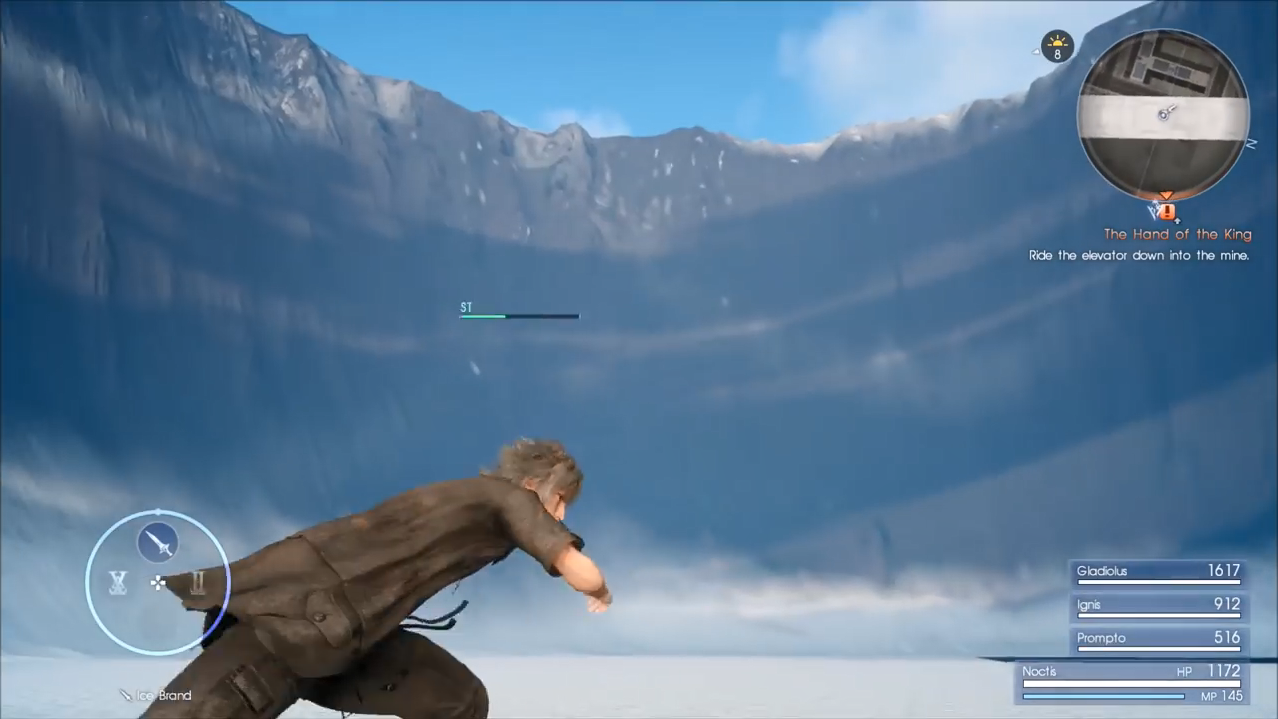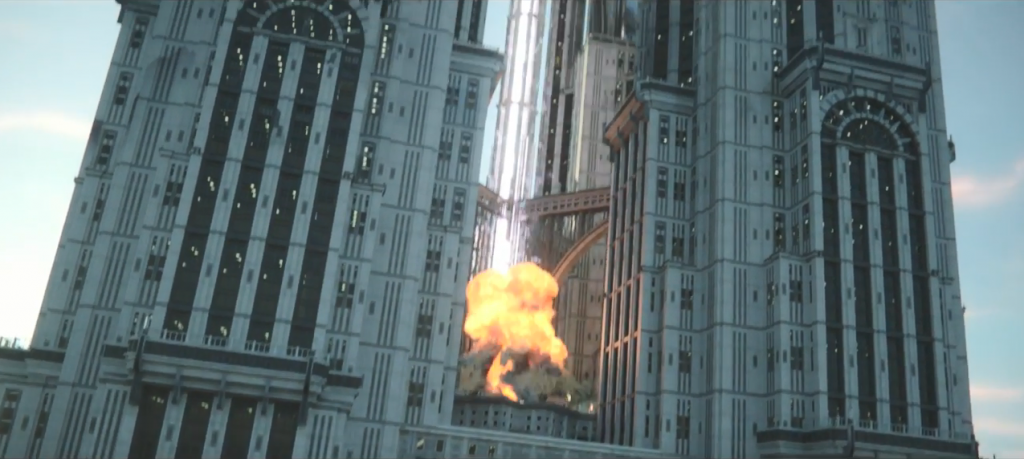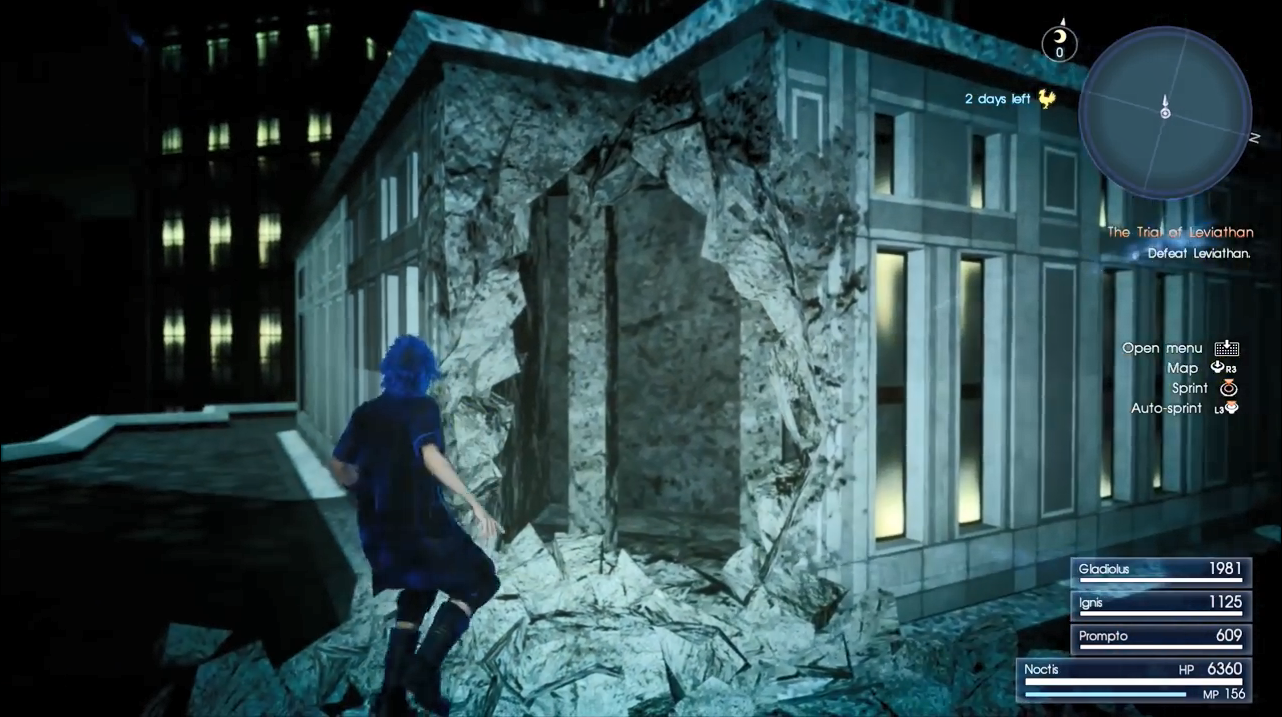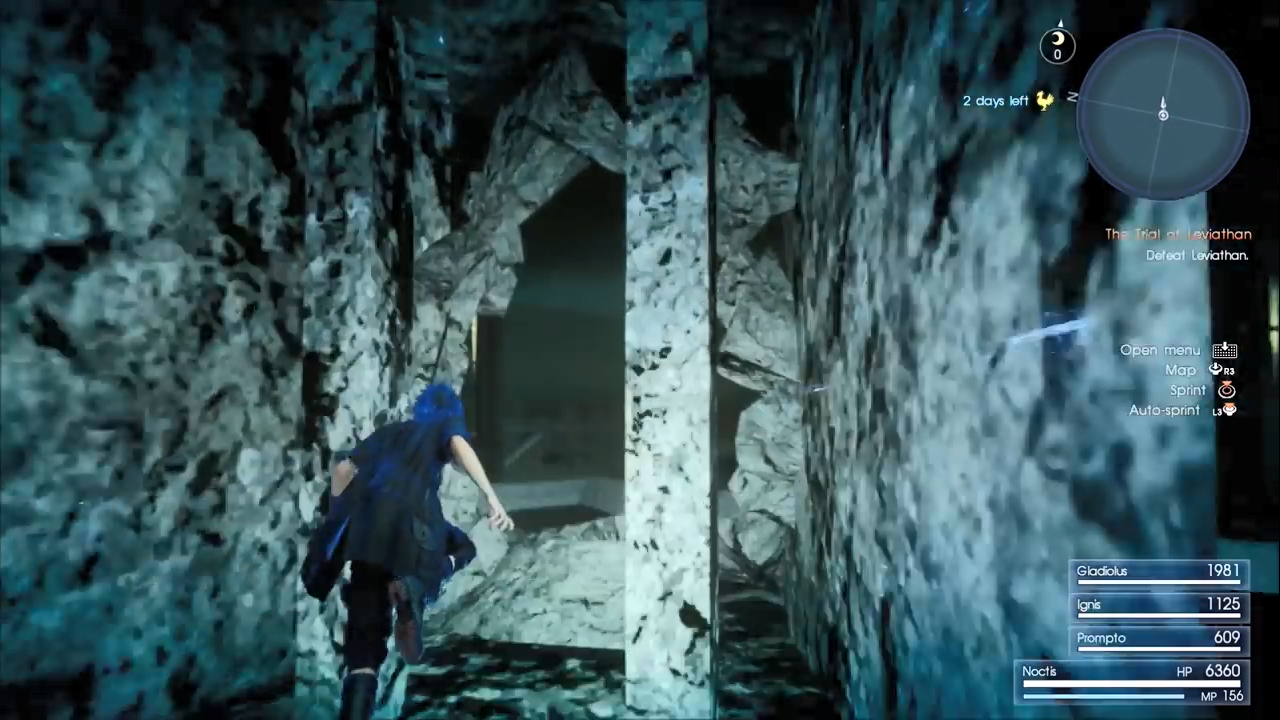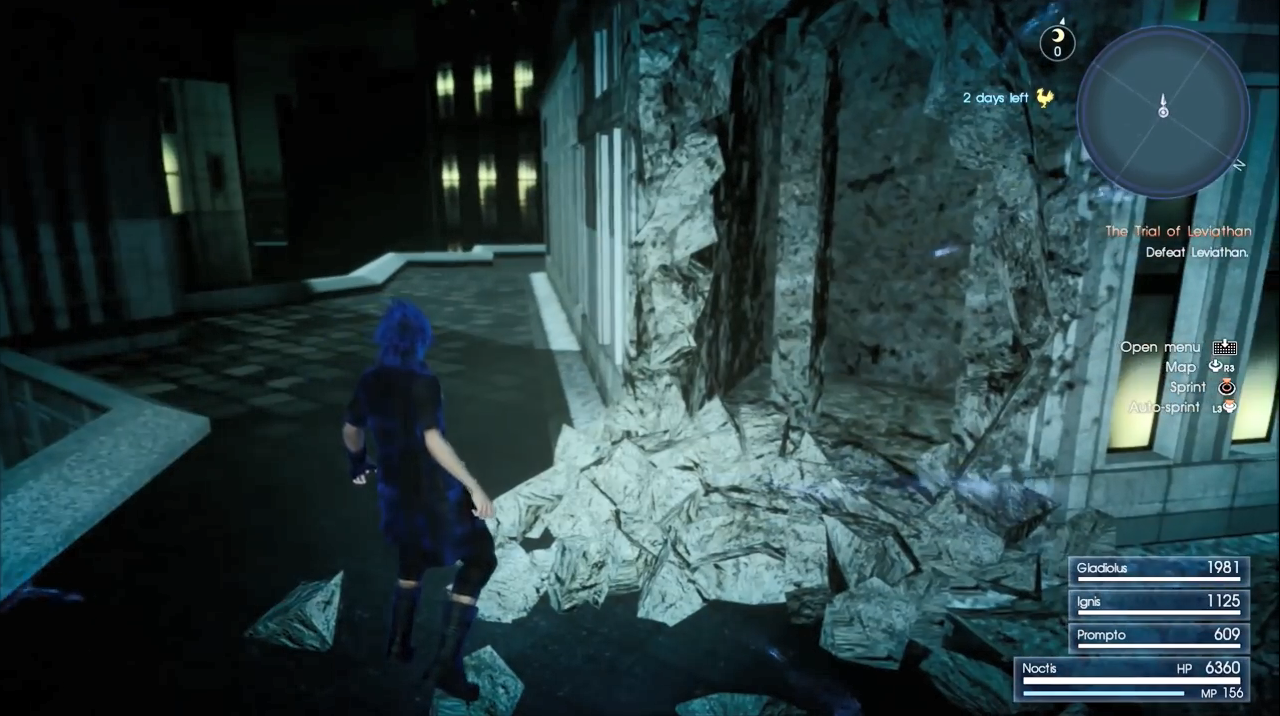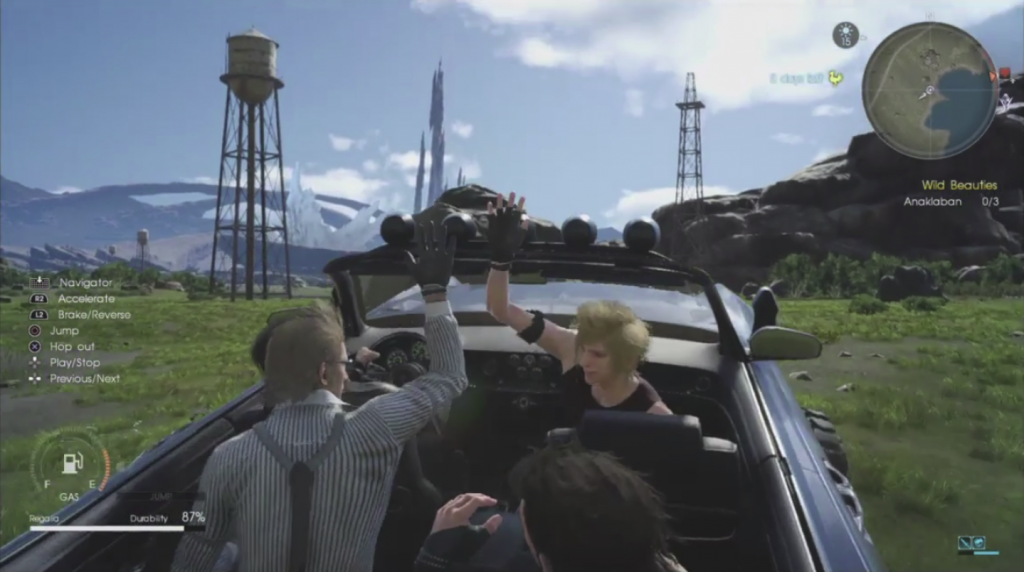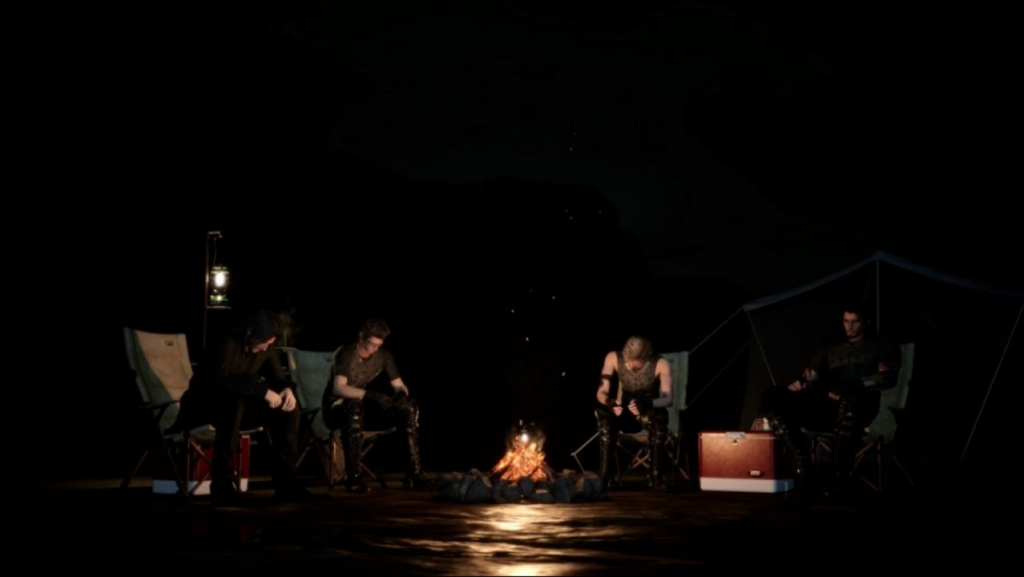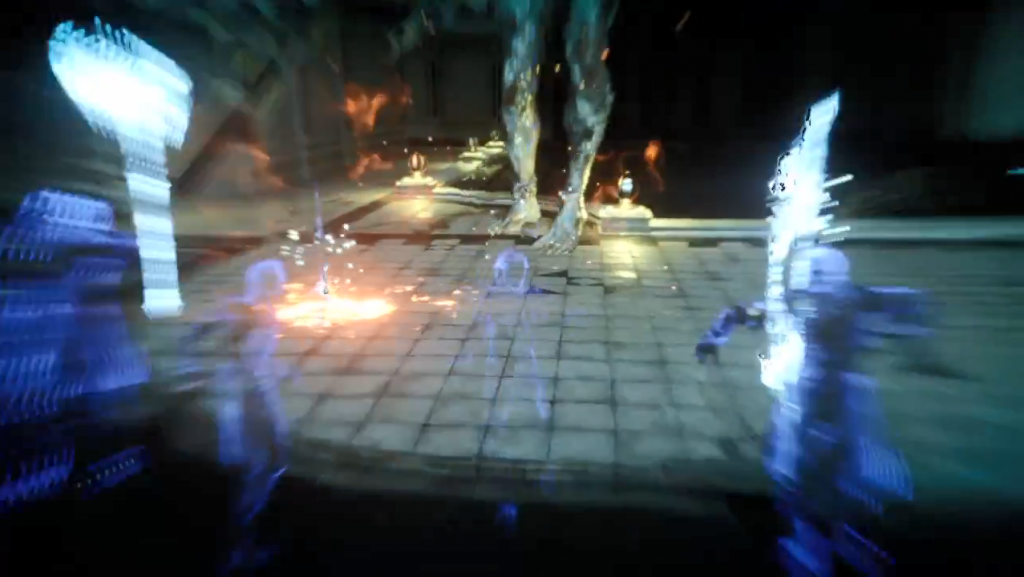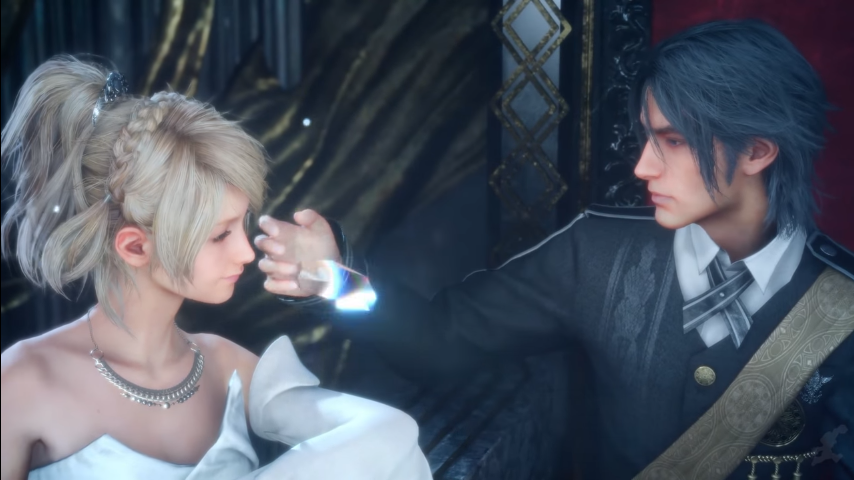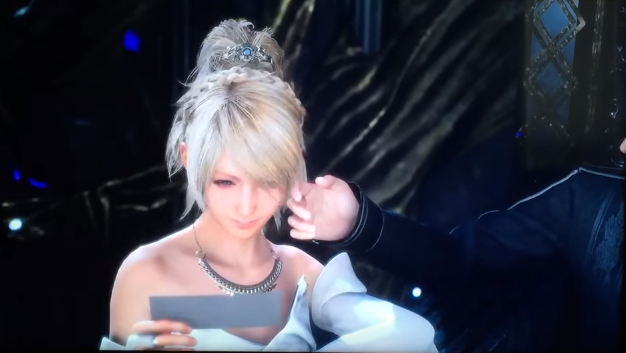Theories and observations about the story and world of FFXV
Where do the “Dawn” and “Omen” trailers fit into the plot?
Thanks to the official timeline of the Final Fantasy XV Universe presented at the 2017 Game Developers Conference, we know that the events depicted in the “Dawn” and “Omen” trailers released prior to Final Fantasy XV itself are recognized as part of the official continuity, or canon, as the word is known. The descriptions of the videos on the official North American Square Enix and FFXV YouTube channels also point to this — as well as explain where precisely these visuals fit in with the rest of the story:
—Official description for the “Dawn” trailer
And a madness that brings harm to the beloved fiancée.
This short movie, which can only be described as a nightmare for the struggling Noctis, is a collaboration between FINAL FANTASY XV and Digic Pictures, the world renown 3D animation studio that also took part in the creation of KINGSGLAIVE FINAL FANTASY XV.
—Official description for the “Omen” trailer
These descriptions — and the content of the videos — in mind, it’s fairly simple to establish their place in continuity. “Dawn” takes place fifteen years before the main events of FFXV, seemingly just as Regis learns of Noctis’s tragic destiny to die saving the world as the Crystal’s Chosen King. We know from multiple other sources for lore (e.g. the in-game loading screen for the Crystal and several statements within the FFXV Scenario Side Ultimania) that the Crystal chose Noctis fifteen years ago, and Regis was informed of the selection at that time by his ancestors.
Indeed, that seems to be not only what was highlighted in the description of the trailer, but also precisely what is depicted within. Both the captions and visuals throughout point distinctly in this direction. As the former kings of Lucis ominously loom above them, Regis cries while embracing the five-year-old Noctis — all to the accompaniment of these captions:
“Omen,” meanwhile, depicts what the official timeline labels an alternate reality; one in which Noctis sets out on his journey alone. The haunting imagery that follows would appear to be the future Regis sought to avert, mentioned in the trailer’s official description. Certainly the vision Regis experienced sheds new light on the king’s plea from the beginning of the game that Ignis, Gladio and Prompto “remain at his side.”
More than that, though, might the glimpses shown of this “future that must be avoided” share plot elements with the Final Fantasy Versus XIII project that became FFXV? “Omen” shows us Noctis fighting Lunafreya to the death — i.e. hers. In Versus XIII, Noctis was supposed to fight Stella Nox Fleuret (as seen in this 2008 trailer), the character who director Hajime Tabata and co. later adapted into Lunafreya Nox Fleuret for FFXV.
While exploring similar observations, fan ArbyWorks also made the observation that Nyx not only took Noctis’s place from a writing perspective during the events leading up to the invasion of Insomnia, as we went over in the “Allusions and references to past Final Fantasy projects” section of this archive — but that he may have literally taken Noctis’s place within Regis’s vision. As ArbyWorks put it, “Regis spread Noctis’s fate out,” presumably preventing Noctis from having to witness his father’s death, and possibly beginning an alternate series of events that would not lead to the worst aspects of Regis’s vision actually coming to pass.
Perhaps along those lines, “Omen” also gives us a sense of Noctis gradually descending into either madness or outright evil. By the end of the trailer, he even looks somewhat like Ifrit. He’s presented bare chested; surrounded by flame and flanked by several Cerberus creatures; has fiery, demonic eyes of his own; and even though the trident he’s holding is Luna’s weapon, it’s hard not to think of the devil archetype Ifrit also evokes when Noctis is standing there holding such a weapon accompanied by all that other imagery.
Furthermore, the pose in which Ifrit sits on his throne when he appears in FFXV, while an obvious reference to Yoshitaka Amano’s concept art of Chaos for the original Final Fantasy, is also reminiscent of the pose in which Noctis sat at the beginning and end of the original Versus XIII trailer.
Perhaps the story once would have featured some thematic parallels between Ifrit and Noctis. Perhaps the prince of Lucis would have slid toward villainy.
All one can say to these musings is “perhaps,” but we can say with certainty that the apparent madness that compelled Noctis to slay Luna in “Omen” has no obvious correlation in the plot or setting of the final game that is Final Fantasy XV. It seemingly belongs to another story altogether.
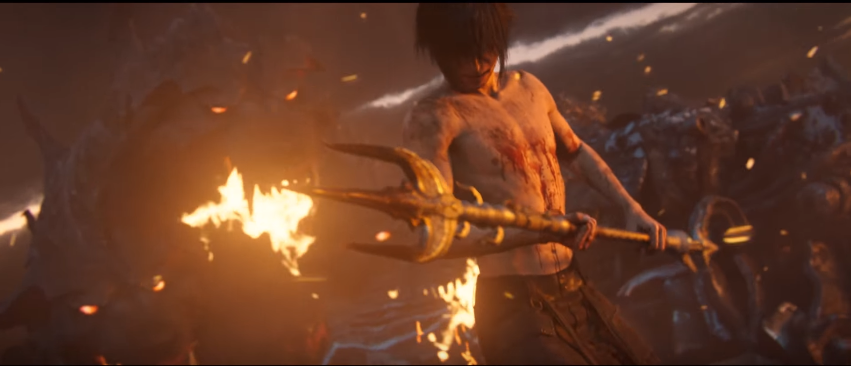
Some fans have also pointed out that much of what “Omen” forewarned still came to pass, if anywhere from somewhat differently to drastically altered in final circumstance: the Regalia was still destroyed; Altissia still suffered catastrophe (though not nearly to the same extent); Tenebrae still came under attack by monsters; Noctis still saw his powers neutralized for a time; Pryna still died; and Lunafreya still died as well.
Despite this, what would have been, to Regis, the greatest of the tragedies he witnessed — i.e. Noctis killing Lunafreya with his own hands, and the prince going down a lonely road into ever more hellish darkness — was avoided at least. Lunafreya died helping Noctis rather than pleading with him, and Noct experienced companionship and brotherhood all the way to his heroic departure.
Who is Regis speaking with at the end of “Omen”?
This question remains unanswered, sadly, but there are a few plausible candidates for the role:
• The Crystal
• Bahamut
• Ardyn
The Crystal seems the most obvious choice being that it is the only other entity clearly in the room, and given that it has some heretofore undefined degree of sentience. That the Crystal possesses a consciousness would be obvious enough from the fact that it makes the selection of the Chosen King, but the in-game Lore Guide from FFXV’s opening tutorial also makes this case for us clearly: “The Stone has a will of its own, and channels its sacred power through the Ring of the Lucii to the monarch who bears it.”
Bahamut seems another somewhat obvious candidate given that he is residing within the Crystal when Noctis encounters him at the end of Chapter 13. That being said, the voice isn’t a match for Bahamut’s.
Ardyn is our last reasonable candidate given that he longs for “one death” in particular, though the voice being his seems a stretch for obvious reasons. While the eerie growl that emerges from Ardyn the moment before Noctis puts his soul to rest in FFXV’s ending does sound similar to the growl of the voice conversing with Regis here, we’re never given a reason to believe Regis and Ardyn ever spoke to one another before the imperial chancellor visited the Citadel early in “Kingsglaive: Final Fantasy XV.” For that matter, Ardyn was hardly as forthcoming with Regis — or anyone else — as this entity appears to be.
For the time being, the Crystal seems the most likely owner of the voice. We never hear another voice belonging to the Crystal with which to compare this, so even if not a point directly in the notion’s favor, there’s no detraction in that regard either. The only apparent detraction is how seemingly sinister the voice is — both in tone and its choice of wording. In light of the divine indifference more than one of the gods exhibit for the lives of mortals, however, this may not be the mismatch it seems at first glance. The Crystal does desire the Chosen King’s death, after all, and has been awaiting it for a very long time.
Are the Lucii/Knights of the Round gods like the game’s other summons?
They aren’t, but they are technically summoned, both in the form of the Old Wall and in their smaller spirit forms in the scene from the ending where Noctis finally puts Ardyn’s soul to rest. They are also clearly a reference to Final Fantasy VII’s summon of the same name.
Those details in mind, it is the opinion of this fan that they could be reasonably classified as summons like the gods, even if they themselves are not gods.
Is Regis one of the Knights of the Round?
It may be easily overlooked given how fast paced some of the imagery of the game’s ending can be, but Regis himself becomes the thirteenth knight to complete the reference to the FFVII summon. While it is difficult to make out which knights (i.e. Lucii) are which when their weapons emerge from Noctis in the spirit realm, what can be more easily verified is that thirteen weapons appear, as seen in this screen capture:
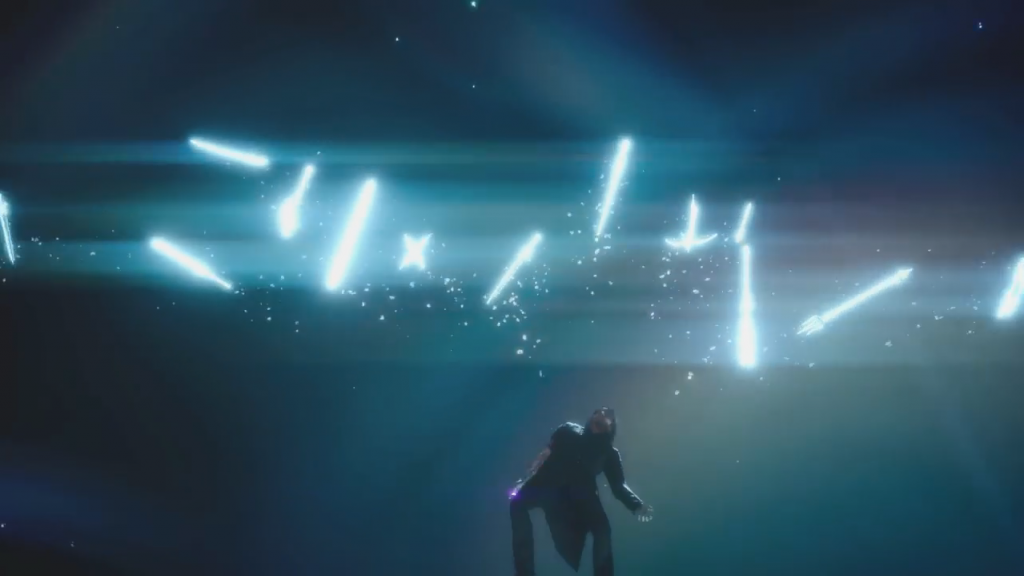
The weapon on the far left is also clearly Regis’s personal sword.
The gods sacrificed themselves along with Noctis
Players of Final Fantasy XV will no doubt remember Noctis calling down the spirits of his ancestors, the Lucii, to perform the ritual that allowed him to cleanse the world of the Starscourge and restore the Light. Their sacrifice of their essence alongside Noctis’s sacrifice of his life is impossible to miss. Much more easily overlooked, however, is the revelation that the gods sacrificed themselves here as well.
In what is an extremely blink-and-you’ll-miss-it transition, Titan, Leviathan, Shiva (with Ifrit’s severed horn in hand), and Ramuh take shape in the sky around the Citadel, then disperse themselves into energy that unites with Bahamut above the building. He then seemingly disperses their combined energy downward as the Lucii descend and take shape in the throne room around Noctis before adding their power to his one painful blow at a time.
The gods’ shapes are most easily visible before Leviathan has even fully taken shape to the far right, but they are impossible to miss in this screenshot:
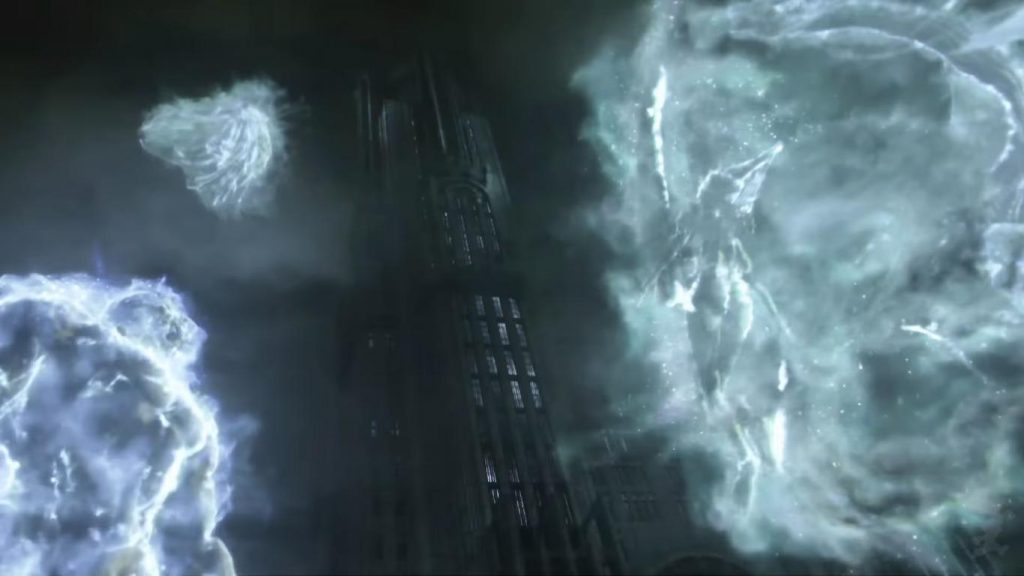
As is Bahamut’s shape in this image:
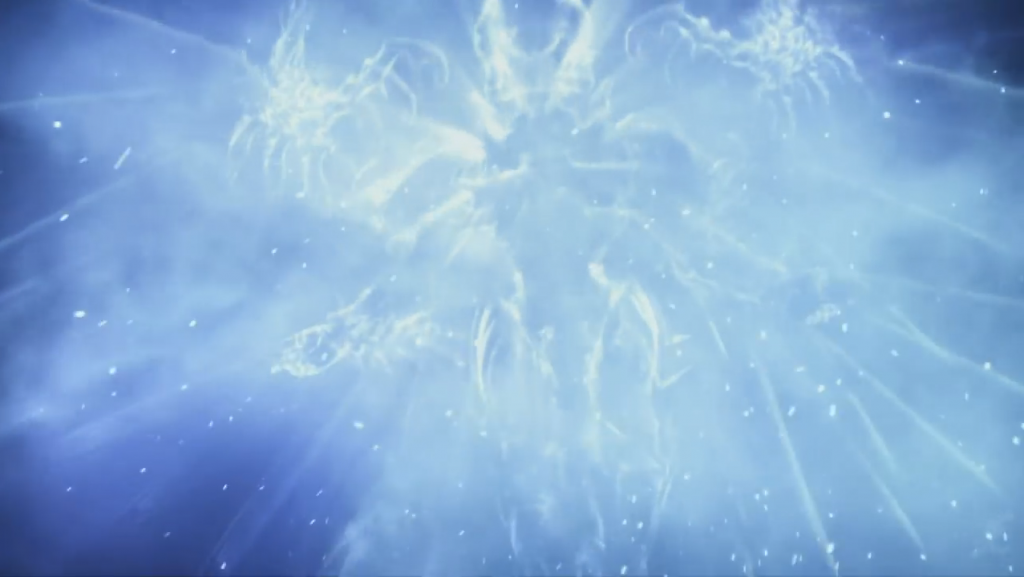
The shape of Ifrit’s horn in Shiva’s arms is a little harder to identify, but she is definitely holding something that resembles it. Here’s an image to compare it against from when Noctis has just broken the horn off, before it goes flying off screen:
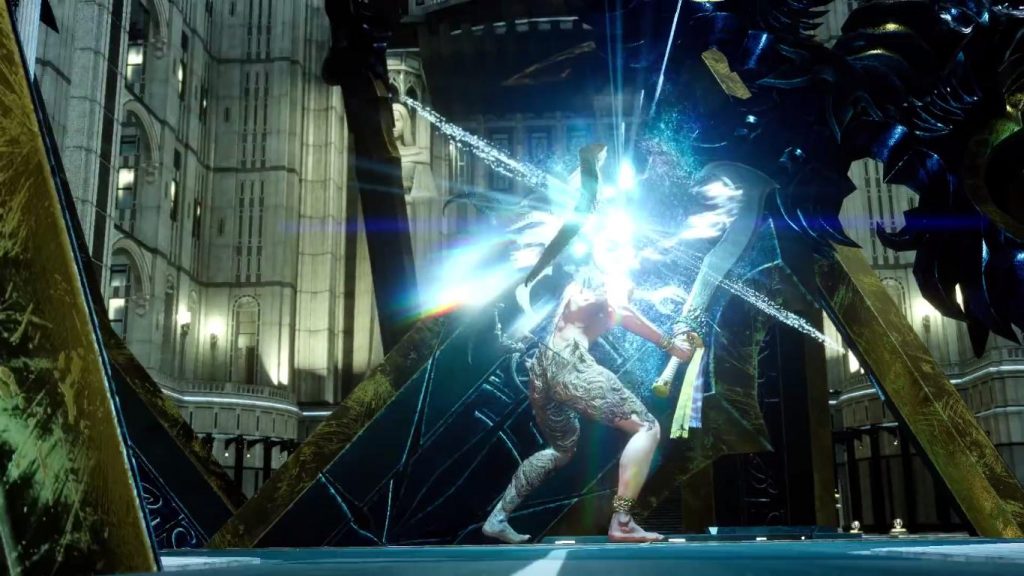
Where did the Starscourge come from?
Final Fantasy XV is, as longtime FF fan X-SOLDIER put it, “a sort of ‘Greatest Hits’ Final Fantasy in many ways.” As many references, Easter Eggs, callbacks and allusions to other titles as Final Fantasy IX had, it’s possible FFXV gives that game a run for its money in this regard.
The mysterious Starscourge makes for something of an onion-style (or ogre-style, if you so prefer) reference: it has layers. And though any theorist should be reluctant to suggest a literary reference or Easter Egg could tell the story of the person, place or thing doing the referencing, in this case, it makes for a good place to start.
In the original Japanese, the name of the Starscourge is “星の病.” A literal word-for-word translation into English would render this “Scourge of the Star” — or “Stars.” Or possibly even “Scourge of the Planet” or “Planets.”
The Japanese version of FFXV’s script makes frequent use of the word “hoshi” (星) — a word that can essentially be used for any celestial body that isn’t the sun or moon, but which typically means “star” and sometimes “planet.”
Just as the Japanese script made frequent use of “hoshi,” the English localization makes (even more) frequent use of the word “star,” as this is what the English localization team chose to translate “hoshi” to. However, it should have been translated as “planet” throughout this game, as was the case with the English localization of Final Fantasy VII.
This isn’t just a self-righteous weeaboo fanboy with a halfway passable understanding of Japanese saying so: the game itself outright says so at the beginning during the Lore Guide from the game’s opening tutorial. It says this in plain Japanese — but not in plain English, as the localization bizarrely omits this information.
In the Japanese version of FFXV, the segment of the Lore Guide entitled “The Six and the Oracle” ends with an additional line that says ちなみに、これらの話題でいう「星」は「世界」の意です — “By the way, ‘star’ in these topics means ‘world.'” This either became “star” in the official English localization due to an error in translation or, as is more likely, a deliberate choice on the part of the localization to give some linguistic flair to the game’s dialogue.
Click here for a screenshot or here for a video showing this segment of the Lore Guide in the Japanese version.
So, where do references begin to come into play in all this? Consider the Japanese spelling of geostigma, the affliction plaguing the populace of FFVII’s world in “Advent Children”: 星痕症候群. Kanji for the key ideas — “hoshi”/planet/star (星) and sickness (病) — are present in both.
While we won’t go as far as to suggest that “Starscourge” should be something more like “Planetscourge,” “World Sickness” or maybe “Terrastigma,” the names are similar enough to qualify as an obvious reference, even if they’re dissimilar enough that you wouldn’t want to translate them the same. Nonetheless, one can’t help but think back to when the earliest news about “Advent Children” was being released. The common fan translation at that time for what would officially became “geostigma” was “Star Scar Syndrome.”
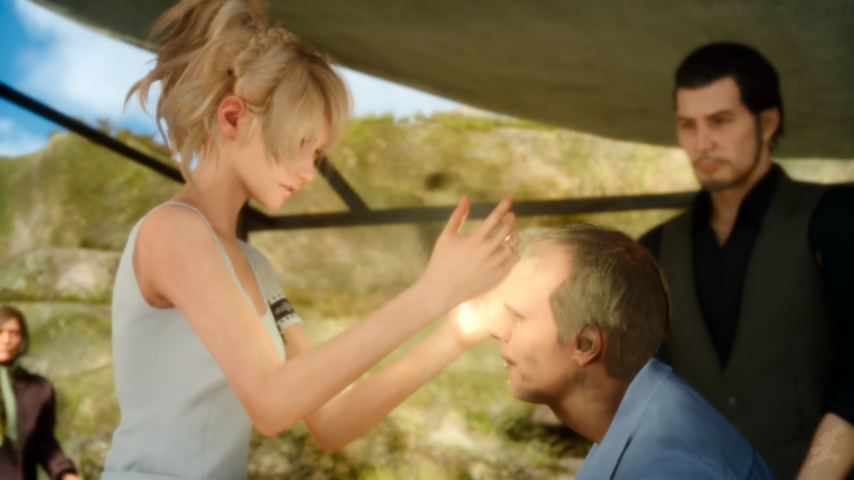
Where the reference becomes as subtle as a jackhammer, though, is that pg. 70 of the “Reunion Files” told us geostigma was adapted from an idea originally intended for Final Fantasy X, in which Yuna would have healed people afflicted with disease during her travels. FFXV features Lunafreya doing literally that very thing, as in the scene from Chapter 4 where she heals the older gentleman suffering from infection by the scourge.
The scourge has another tie to this epidemic from FFVII’s setting, however: The cause of geostigma was infection by the viral cells of Jenova, a malevolent alien entity that had arrived on a meteor approximately 2000 years before the main events of FFVII. At the time of Jenova’s arrival, it infected many people with its cells, turning them into monsters. In the present day, its cells were utilized in unethical experiments that turned still more people into monsters.
Sound familiar?
Outside Lestallum, Final Fantasy XV prominently features its own meteor that arrived on Eos some 2000 years before the main events of its game — during the same time period the Starscourge first emerged. Being clever as you are, dear reader, you will no doubt have put it all together by now: the scourge is FFXV’s version of Jenova.
Interestingly enough, the German localization of the game had Ardyn outright say the Starscourge originated from the Meteor during the scene from the end of Chapter 13 where Noctis is absorbed into the Crystal, as we can see around the four-minute mark in this video:
… eine Welt, die von einer unheilbaren Plage heirngesucht wurde – ein kleines Mitbringsel des Meteors … Dunkle Parasite befielen Eos und verwandeiten ihre Wirte in seenlose Monster.
However, this appears to be quite the liberty taken with the German localization, even if it is just putting two and two together. The Japanese script takes decidedly less initiative about the matter. Here’s a video and transcription of what Ardyn says in the scene where he’s talking to Noctis about ages past:
特効薬のない 流行り病が蔓延した
元凶は 寄生虫だった
その病に冒された者は
化け物とみなされ 殺された
The official English translation is a pretty good match for it, though far more elegant than a more straightforward translation:
For a less potentially questionable piece of evidence for us to look to regarding the origin of the scourge, consider the daemon infestation at the EXINERIS Power Plant during Chapter 8. The lights in Lestallum should have prevented daemons from entering the facility by normal means. More likely, the malevolent creatures had to manifest within, and did so via the meteor shards used to power the facility — i.e. the parasite constituting the scourge gained access to some of the plant personnel by way of the meteor. It then infected these people and turned them into daemons.
Finally, note also the similarity between the flames that rise from the Meteor and the flames that rise from daemons when they die.
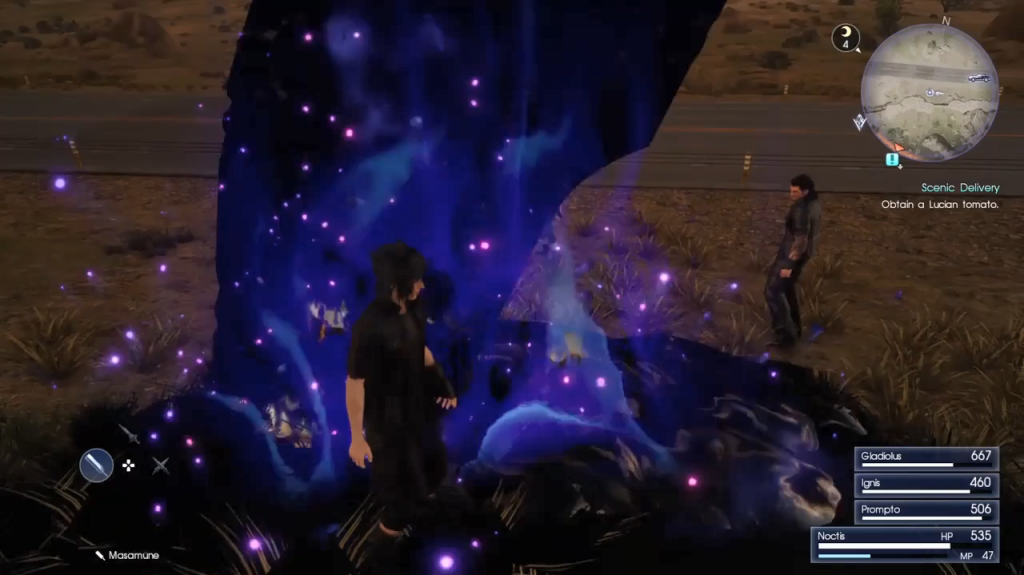
Before we completely close out this topic, it bears acknowledging that “The Complete Official Guide” for FFXV published by Piggyback carries the following comment on pg. 318 in its “History of Eos” section:
From this segment, many fans have interpreted the book to be saying Ifrit created the Starscourge. That’s not necessarily the case.
The book seems only to point to Ifrit spreading the parasite, which he could presumably do regardless of whether he was its creator. It’s also rather counterintuitive to suggest the scourge was a product of Ifrit’s power. Would the full power of the Crystal — which Bahamut described as “greater than even that of the Six” — really be needed to quell the power of just one of the gods?
On a (final) related note, it may well be that Titan’s death inadvertently contributed to the spread of the Starscourge, and may explain the sudden, rapid loss of daylight during the main events of the game. The Meteor he had held so long was seemingly reduced to dust during Noctis and the empire’s confrontation with the god, as the entire Disc of Cauthess area is an empty caldera thereafter. Perhaps this pulverizing of the scourge’s delivery mechanism allowed a great flood of the parasite to become airborne.
In light of the Version 1.16 update to FFXV on September 29, 2017 confirming that the German localization had been correct in its iteration of Shiva’s bestiary entry (released with the Version 1.15 update of August 30, 2017) claiming Shiva had been Ifrit’s lover, this author would suggest that perhaps the German localization team’s position similarly granted them access to information about the Meteor and Starscourge not overtly stated in even the original Japanese text. Perhaps they chose to reveal/confirm these details of the lore to players in their localization of Chapter 13, just as the English localization team chose to reveal/confirm that Ifrit’s original body rests at the Rock of Ravatogh — another detail of the setting that would see further corroboration from the aforementioned Version 1.16 update.
Who was Gilgamesh?
In “Episode Gladiolus,” we’re introduced to Gilgamesh, the Blademaster, of whom we’re initially only told that he “test[s] those determined to become the King’s Shield.” We eventually learn, though, that he’s been doing this since the Kingdom of Lucis was founded:
Prompto: That’s a long time.
Gladio: All those years waiting for the Chosen King to arise. You sure know how to take your sweet old time.
Noctis: What can I say? I’m worth the wait.
Who was Gilgamesh that he would be so dedicated to this mission of testing the worthiness of the King’s Shield — never allowing his own soul rest — as to do it for so long? One reasonable possibility is that he was the Founder King’s own Shield, aware of the Chosen King who had been intended (i.e. Ardyn), and determined to see the next one succeed.
Would that then make him Ardyn’s Shield or the Shield to Izunia, the man who seemingly betrayed Ardyn?
This theorist would suggest Gilgamesh is more likely to have been Izunia’s Shield, as Ardyn never ascended to the throne — and, thus, was unlikely to be in a position to be named “the Founder King.” That information comes to us courtesy of Bahamut in the game’s Japanese script.
Among other things, Bahamut will say the following at the end of Chapter 13 of the English localization, when answering Noctis’s question “Who is ‘the Accursed’?”:
The original Japanese line here provides additional insight:
________________
“A foolish man who was rejected by the Holy Stone for that unclean body and was buried without ascending to the throne.”
That in mind, if Gilgamesh did once serve as Shield to a king, it was most likely Izunia.
What was the device that Ardyn pressed at the end of Chapter 12?
You may recall Ardyn raising a small device in the final scene from Chapter 12, and activating it with his thumb. This action seemingly goes unexplained, but is intended to become clear early in Chapter 13 when Noctis finds himself unable to conjure his weapons.
What Ardyn has activated is a particularly useful tool in Niflheim’s arsenal called the Wallbreaker Wave. Two documents found in Zegnautus Keep in Chapter 13 identify this technology’s name and purpose:
The wave produced exceptional results in real-world conditions, effectively inhibiting the Kingsglaive’s warping and spellcasting abilities—powers that operate on the selfsame principle as the Wall of Lucis.
The report concludes that the wave can neutralize not only the Wall, but all magical phenomena exhibited by Lucian royalty. Moreover, based on the data acquired from the encounter with Shiva, an enfeebling effect on the Six can also be anticipated.
The source of the wave appears to have been the machinery in Emperor Aldercapt’s throneroom, though whether Ardyn was activating this particular machinery on the train or a similar device left in the Ghorovas Rift — where Shiva had been weakened by the wave 12 years earlier, allowing the empire to kill her — is unclear. It may well be that the entire mountain range from the Ghorovas Rift to Gralea houses similar broadcasting machinery.
What’s the story with General Glauca?
One of the more confusing aspects of Final Fantasy XV’s overall plot for most fans is pondering how Captain Drautos of the Kingdom of Lucis and General Glauca of the Empire of Niflheim are the same person.
The confusion of this plot point mostly raises logistical questions: How did Drautos/Glauca confer with the empire when he needed to? Did he not have to leave the city to do so? Other questions raised in the mind of a first-time viewer of “Kingsglaive: Final Fantasy XV,” however, may include “Was Drautos actually from Niflheim?” or “If he was from Lucis, how long ago did Niflheim convince him to come to their side, and how did they do this?”
Thanks to pg. 42 of the FFXV Scenario Side Ultimania, we can answer several of these questions — though still not all. Drautos’s profile under the book’s segment on the Crownsguard and Kingsglaive explains:
Perhaps even more illuminating, under the personal timeline for Ardyn in his profile (pg. 19), we learn that the imperial chancellor got in contact with Drautos “about 10 years ago.” This is arguably the most thought-provoking detail we find about Drautos, for reasons we will revisit momentarily.
For the moment, let us recap what we do know now: Drautos was indeed a Lucian; he was from outside Insomnia; his hometown was lost to the empire some 30 years ago; he despised Regis (he states as much in “Kingsglaive”); Ardyn reached out to him approximately 10 years before the main events of FFXV; and he would have ventured outside the Crown City in his role as captain of the Kingsglaive, as we see early in the movie of the same name.
The picture does begin to become a little more clear for us, in that Drautos’s enmity for Regis likely stemmed from resentment over his hometown being conquered when King Mors (Regis’s father) scaled the Wall’s protection back to just the walls of Insomnia — a status quo Regis left in place during his entire reign as king.
Questions that are now raised for us include why Ardyn’s Ultimania profile is worded to say that he contacted Drautos “about 10 years” before the main events of FFXV … when we saw General Glauca lead the attack on Tenebrae in the opening of “Kingsglaive” — which is otherwise specified to have occurred 12 years before. Does this indicate to us that Regis’s fierce counterattack killed the original “real” General Glauca during the opening of the movie (without the king realizing it), and when Ardyn came to Drautos a couple of years or so later, he asked the Lucian captain to take up that identity?
Even with this question answered, and even should we no longer concern ourselves with how Lucis’s betrayer communicated with Niflheim on an ongoing basis, we’re still left with one lingering logistical quandary: Our goal here is largely to pinpoint when Ardyn and Drautos could speak without the barrier preventing it. How did Ardyn get in touch with Drautos the first time? Either Drautos had to go outside the Wall for Ardyn to approach him or Ardyn had to somehow pass through the Wall undetected and without being granted access.
The latter scenario raises far more questions than we could hope to address here, so we shall ponder the occasions in which the former might apply. As we’ve established, in his role as captain of the Kingsglaive, Drautos would no doubt leave Insomnia from time to time for the sake of a mission or giving orders — we see him do this within the first few minutes of “Kingsglaive,” after all, so that’s not too far afield a proposal.
Perhaps he had even simply gone to visit the ruins(?) of his hometown about ten years ago, and Ardyn approached him at that time, reminding him that King Mors had “abandoned” the town by withdrawing the Wall, which Regis had never expanded again.
The precise answers to all of our questions about what is — for many FFXV fans — the FFXV Universe’s greatest mystery will likely elude us, but the matter should now feel much less confusing at the least.
Was the Crystal taken from the Rock of Ravatogh?
[Note: This observation is part of a much longer theory from a husband and wife couple going by the username perona77. As much of the rest of their larger theory is, to be blunt, fanfiction often at odds with established lore, it will not be covered by this archive; their writing can be read here, where it was originally posted]
The entrance to the lava-spewing cave on Ravatogh presents a rather startling observation: both above and to the right of the cave entrance are textures that match the look of the Crystal’s outer shell:
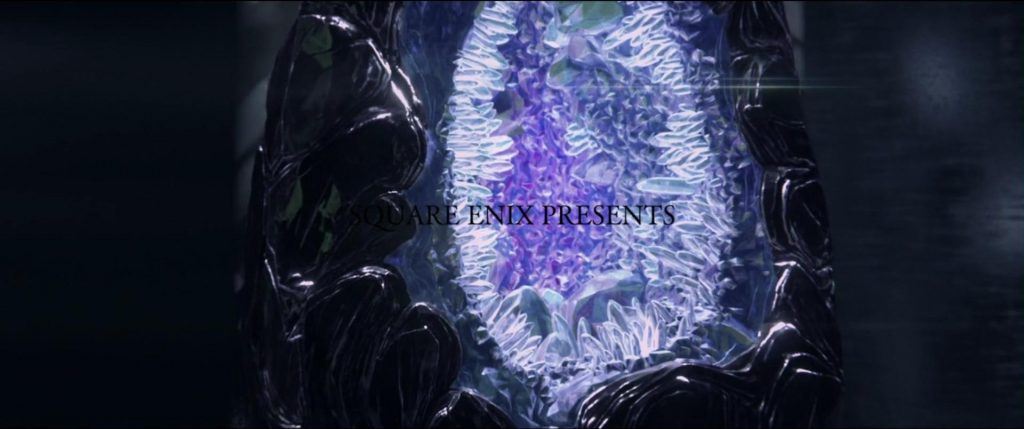
The implications of these matching textures are not immediately clear. There’s no obvious reason, save for there being a connection between them, for textures on the literal heart of Eos to match some appearing at this volcano yet nowhere else in FFXV. This may point to anything Ifrit having the Crystal in his possession when he died to the Crystal’s “birthing chamber” having been at the Rock of Ravatogh.
How is Pryna in “Episode Prompto”?
A matter of some confusion for players after the release of “Episode Prompto” involves the FFXV Universe’s less-seen canine Messenger, Pryna. Most prominently featured in “Dogged Runner,” the second episode of “Brotherhood: Final Fantasy XV,” Pryna is described along with Umbra in the following manner by a loading screen from the main game:
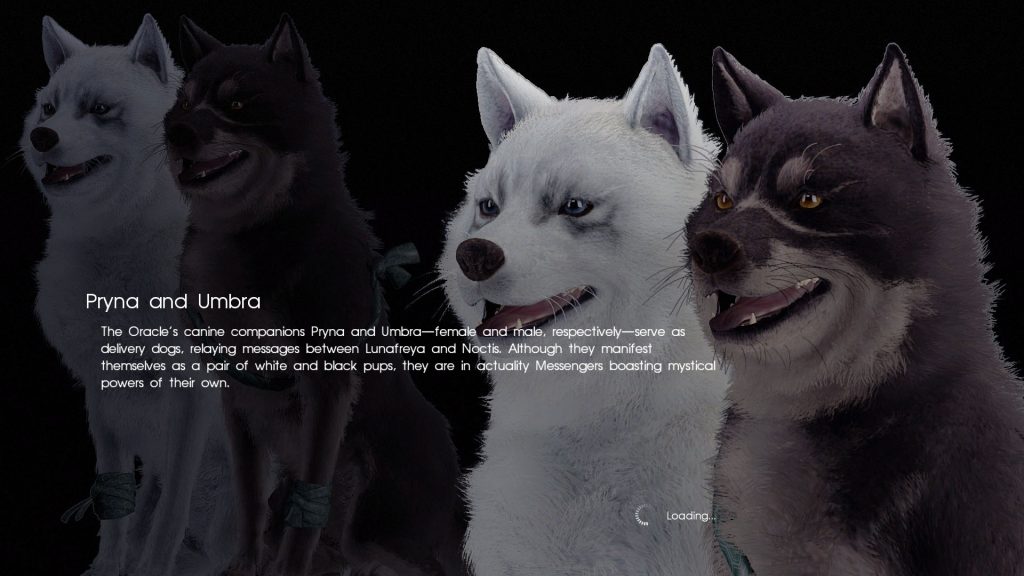
Pryna and Prompto also have a bond stemming from when he treated her wounded leg, as depicted in a flashback from the “Brotherhood” episode cited above. Sadly, during Chapter 12, Pryna is revealed to have died during the events of Chapter 9, coinciding with Lunafreya’s own death:
Noctis: Yeah… Umbra’s toughing it out.
Maria: May the stars watch over you, Prince Noctis.
Though the six gods are seemingly able to persist in some capacity after death, whether this ability extends to their Messengers is unclear. With the precise cause of Pryna’s passing going unfortunately unremarked, and with so much about the nature of the Messengers also unknown, it’s impossible to determine for certain whether Pryna’s presence in “Episode Prompto” is entirely part of the hallucinatory visions the eponymous protagonist was experiencing around the time he follows the dog to a wounded magitek trooper.
Given, however, that one of these visions (when young Prompto receives the letter and photos from Pryna) inarguably included a hallucination of the divine canine, it would certainly make for the more simple explanation. That Umbra apparently misses the other dog would also serve to imply that Pryna was really dead, and that Prompto was only imagining her presence.
Why is there still daylight left in “Episode Prompto”?
A more difficult continuity conundrum to resolve from Prompto’s DLC than the one investigated above is the matter of conflicting daylight hours between “Episode Prompto” and the main game. There are really only two possible junctures in the main game’s timeline for when Episode Prompto could take place, and both leave us with discontinuity.
Prompto’s (somewhat) solo adventure obviously takes place after Chapter 11 of the main game, but also after the Tenebrae segment of Chapter 12. Aranea reveals to Prompto that Noctis asked her to find him during his brief stop in the now destroyed home of the Oracles.
We’re then left with two points during the main game that “Episode Prompto” could occur. Either pretty much immediately after Noctis, Ignis and Gladiolus leave Tenebrae — or after their encounter with Ardyn at the end of Chapter 12.
Seeing as Ardyn has Prompto’s gun with him at the end of this chapter, but gives it to Prompto at the beginning of his DLC, that would seem to lend itself more to the DLC beginning afterward — though it is possible, of course, that Prompto has already been recaptured by Ardyn at this point while on his way to Gralea. Indeed, this would seem to fit with the exchange in the final scene from Chapter 12 when Noctis asks Ardyn where his friend is: the imperial chancellor replies “Where else but Gralea, the seat of the empire?”
On the other hand, Prompto is unable to conjure his weapon when he first encounters Ardyn during “Episode Prompto,” which may make the timing a better fit for after Noctis’s encounter with Ardyn on the train. Chapter 12 ends with Ardyn raising his hand to activate a device: presumably the Wallbreaker Wave that denied Noctis — and thus his friends — access to the powers of his lineage. Of course, that matter may be as simple as Prompto being unable to conjure the weapon away from Ardyn, who had possession of it, even if Noctis’s powers had not yet been jammed.
Whether Ardyn was lying about Prompto already being in Gralea, though (in anticipation of the fact that he soon would be), or whether “the little gunman,” as Ardyn called him, had truly already been placed in his cell inside Zegnautus Keep, it makes little difference for our investigation. Chapter 12 is entitled “End of Days” for a reason — even if the name is technically “A Gloomy World,” as it had been “かたむく世界” in Japanese, the point remains.
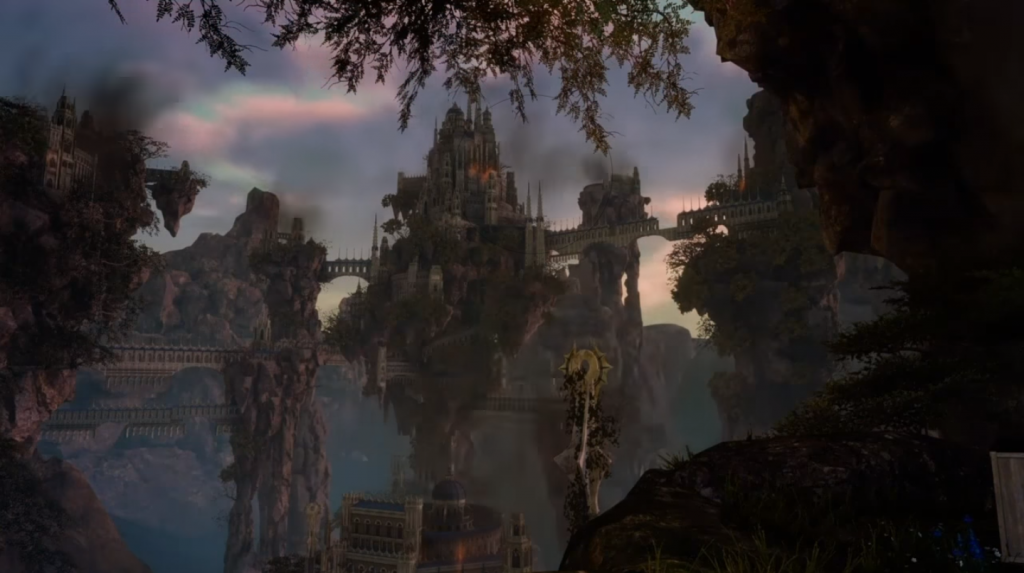
When Noctis, Gladio and Ignis arrive in Tenebrae, Eos is already blanketed in near permanent darkness. The sun has nearly set by hour 17, and daylight is fully gone by hour 18. Meanwhile, the sun will not rise again until sometime between hours 7 and 8, and already starts to set again at hour 14. Even during these eight hours of what passes for day at this point, the sky merely remains the color of sunrise and never reaches full daylight.
What’s more, by the time Noctis has arrived at Zegnautus Keep during Chapter 13, there is a radio broadcast from Dave the Hunter announcing that daylight is already completely gone:
Despite all of this, by the end of “Episode Prompto,” the sun is still setting during hour 19 and night will only fall completely at hour 20. Meanwhile, the sun has risen at hour 5, won’t begin setting until hour 16, and the sky reaches full brightness during the day.
In other words, regardless of when it begins relative to where Noctis is during Chapter 12, Prompto’s personal quest takes place at a point when nightfall comes at least a full two hours after it should have arrived and the sunrise comes at least two full hours before it should — and with an actual period of daytime to follow, where there should be none.
There’s no in-universe explanation that this fan has reasoned thus far to justify this discrepancy. It seems either to be an outright oversight or a case of putting gameplay before the world building in order to give the player more (or less) time for certain sidequests. It may well also be a simple aesthetic choice to get more scenic variety out of the in-game environments after the development team had spent the time to build them.
In either case, it is a continuity error for which there is no correction.
Was Aranea in “Episode Prompto” actually Ardyn?
Despite the declaration made directly above at the end of the previous item on this page, some fans have proposed that there may yet be an explanation for the inconsistencies of setting on display in “Episode Prompto” — and that said explanation may actually shed light on another question that has confused some fans. The suggestion at hand is simply this: Aranea never appeared in Prompto’s DLC, and it was actually Ardyn he was palling around with and fighting magitek troopers alongside, just as Noctis found himself setting out to save the train during Chapter 11 with his ancient relative while thinking it was Prompto.
In line with this theory, it has been suggested that the daylight discrepancies are our first clue that all is not as it seems. The second is Aranea’s claim that Noctis “asked me to make sure you were safe” — something we never see happen during Noct’s reunion with her in Tenebrae. Third, Aranea wears a scarf here, just as Ardyn does. Finally, when Prompto drives away while Aranea looks on after their adventure has ended, the camera pans around to show Ardyn watching him leave.
As good as Aranea would look in that fedora, though, there’s little weight to give the theory.
The issue with the daylight is explained easily enough by the developers prioritizing gameplay and aesthetic considerations, while Aranea wearing a scarf is even more easily explained the same way Prompto wearing a bomber jacket is: she’s wearing warm clothing in a cold environment.
As for the discrepancy in being asked to search for Prompto, Aranea may have been lying about Noct asking her to look for him. Her primary consideration was obviously to find information on whatever Verstael was building and destroy it, so she could have been in the neighborhood for that reason when she came across Prompto. “Blondie” wasn’t in the best of spirits, and she may have (correctly) thought it would do him well to hear that Noct was still concerned about him.
Granted, while asking him “You always play hard to get like this?” when she runs into him would seem to indicate that she was actually looking for him, it is only in the English localization that she says this. In Japanese, she asks him こんなところにいたのか — “What are you doing in a place like this?”
It’s also still entirely possible that Noctis really did ask Aranea to keep an eye out for Prompto. There’s a brief time skip between Noctis speaking with Biggs and Wedge about boarding the train to when he, Ignis and Gladio actually board. Aranea is also suddenly standing there on the train platform to see them off. More to the point, though, why wouldn’t Noctis ask her to keep an eye out? He’s going one way, she’s going another, and he lost track of his friend somewhere in that other general direction.
For that matter, where is the revelation for the player? Prompto won’t know either way, so there’s no reason to continue keeping the truth from us if Aranea isn’t who he or we thought. Ardyn’s appearance at the end certainly doesn’t qualify as our revelation. We already knew he was in the vicinity because Prompto encountered him earlier. More importantly, Aranea is on the ground watching Prompto leave from a vantage behind his snowmobile tracks while Ardyn is on a cliff observing from a completely different angle. Ardyn also quite obviously turns to look at her to his left and below.
Truth be told, one could make this “Ardyn in disguise” argument about almost any NPC — Dave, Navyth, Vyv, Holly, and so on and so forth. All are technically possible if one really wants to force it. What does it add to the story and characterization, though? Where is the impact for us, and ultimately the relevance? It makes far more sense to take such matters at face value, particularly in the absence of being able to provide an answer to this question at the very least.
Is the Naga from Fociaugh Hollow Prompto’s mother?
A rather popular fan theory to emerge after the game’s release involved the snake-like Naga daemon in Fociaugh Hollow who briefly kidnaps Prompto while searching for her baby. Given his origin as a magitek trooper — and given the relationship between these units of the imperial infantry and daemons — that Prompto’s birth mother could have ended up as a daemon herself seemed plausible enough.
In light of all this, that she took specifically Prompto while searching for her baby was simply too interesting to ignore, particularly given that this daemon is one of only three originally in the main game (the other two being Ravus and Emperor Aldercapt — characters of significance) that we ever see retain human speech and some semblance of the human personality they used to have (Melusine, introduced in the Version 1.13 update of July 31, 2017 would become another). The matter became more interesting still when “Episode Prompto” was released (June 27, 2017) and Prompto’s father, Verstael, became the next such daemon.
The situation then becomes even more of a chin rubber when taking into account that Prompto’s father is a (mad) scientist whose research logs tell us he had been conducting experiments to perfect this very phenomenon of retaining human personality after daemonification. He had tested it on others before performing it on himself:
All these things in mind, would it be a stretch that Verstael may have also used the same woman who provided his son/the clone template for his grander self-described “life’s work”: perfecting the means to retain one’s own personality after daemonification?
Truth be told, this fan would almost argue that this makes for the more narratively satisfying and parsimonious direction the details point, especially in light of the many, many parallels between Verstael and FFVII’s Professor Hojo. Sure, Verstael tells Prompto that he was “cloned from this genius’s genes,” but that’s just vague enough to leave room for the possibility that he means Prompto is a clone of Verstael’s own biological offspring produced with a human female.
Furthermore, as gone over in our look at “FFXV allusions and references to past Final Fantasy projects,” one can’t help but see Hojo in Verstael — and Hojo, of course, had used a research assistant to father his child for an experiment that ultimately lead to a line of enhanced soldiers, as well as a “clone” project. The woman in that experiment also found her body going through strange mutations due to the alien genetic material involved in the experiment, exiled herself to a cave where she would later be seen lamenting that she never held her baby, and asking her only known visitors about him …
Sounds familiar, doesn’t it? The Naga seems an almost glaring allusion to FFVII’s Lucrecia.
Obviously there’s no precise 1-to-1 correlation at work, but it’s not a stretch either: the Meteor outside Lestallum is obviously what brought the Starscourge organism to Eos (see “Where did the Starscourge come from?” above), just as a meteor brought Jenova to VII’s world. Jenova’s genetic material transformed people into monsters, just like the scourge. Verstael and Hojo have so much in common already, as do Jenova’s cells and the Starscourge. Why not this too?
Again, this fan would almost argue that the theory makes for the most simple and holisitic explanation of the Naga’s role, Prompto’s origins, and the game’s thematic similarities with FFVII. It’s just, unfortunately, not the correct answer.
This theory, well constructed though it is, falls apart for one simple reason: Verstael’s research logs make explicit that there was no breeding involved in the development of the magitek troopers:
It’s unfortunate to see such a potentially satisfying turn of narrative undone by a few words. Alas, however, there is no stock to be put in it — even if it makes for a better fit than the actual stock in so many ways.
The journalist from Oric’s Culinary Chronicle
A rarely suggested — but no less plausible — theory concerns the journalist spoken of in several entries of Oric’s Culinary Chronicle. You’ll recall the third entry, which recounts the author’s meeting with the nearly ill-fated man:
Just as I think I’m getting the hang of hunting, they send me up here to some mountain in Cleigne to find some lost fella from Lestallum, and I got half-lost myself. No ordinary mountain, neither—this here’s a fire-spewing volcano! Climbed up and crawled through every inch of this rocky hell to finally find what I came for, a little fella curled up next to a big pool of liquid-hot magma. Said he’s been up here for two whole days. Doesn’t look like he’ll be making it down the mountain under his own power…
There are several details that would seem to indicate the identity of this individual is, in fact, Vyv.
First among these clues is the publisher of Oric’s journal: Meteor Publishing. Vyv reveals to Noctis that he is the owner of this company, the name of which can clearly be seen printed across the bottom of the book’s cover.
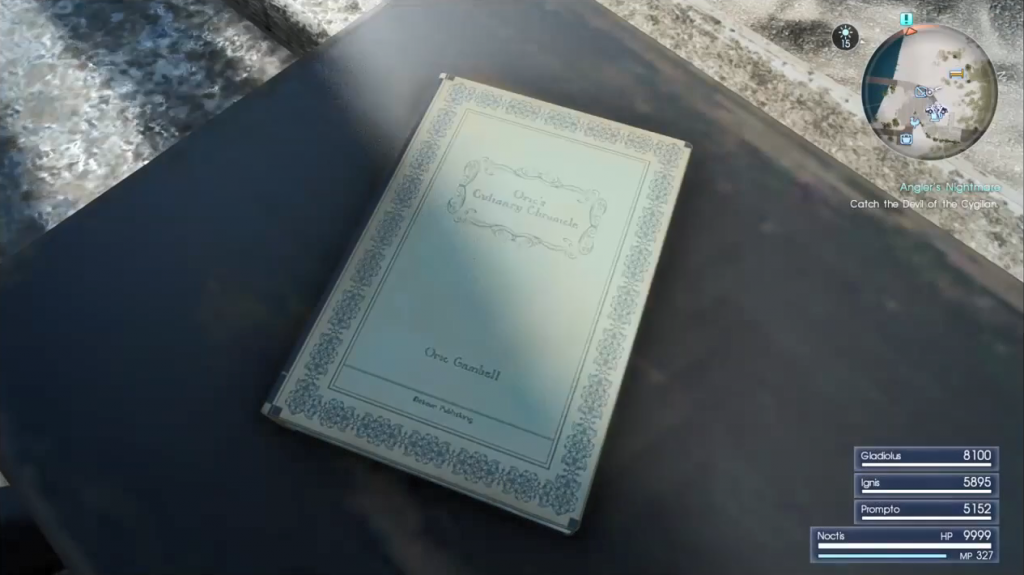
It only makes sense that — should he give the rights to anyone — Oric would give his friend in publishing the license to publish his personal journal.
More signs to the journalist’s identity come from the last of Oric’s entries:
Sounds like my ex-partner’s doing pretty well for himself. Don’t even need to subscribe to his magazine since he keeps sending me copies. Ain’t so bad, though. The missus loves his recipes, and the little sprat keeps begging me to read him one of those fairy tales at bed time. Can’t say why, but all those stories remind me of Leide. Oughta take the family back home and show them old Longwythe. It’ll have to wait ’til tomorrow, though: still got a few bussemands to bust up before dawn.
Oric notes that his friend appears to be doing well for himself. The same could certainly be said of Vyv, who seemingly has money to burn given the handsome compensation he provides Noctis and friends for their time and photos.
It’s also worth remarking upon, given Vyv’s interest in publishing a feature about “the old legends,” that the magazine published by Oric’s friend regularly contains “fairy tales”:
Noctis: Sure, I guess.
Vyv: Okay! What I need is more material for my big feature on the old legends.
―When beginning the “Aftermath of the Astral War” quest
It seems more of a stretch than not for these to be unrelated.
Another observation worth making in our study is that, based on Oric’s comments, it would seem there was something for the whole family in the magazine his friend was publishing; when completing “The Cursed Canvas” quest, Vyv remarks that kids read his magazine:
Another consideration we must make in this analysis of the journalist’s identity is that one of the places Vyv sends Noctis and his friends to take a photograph is the very lava pool on the Rock of Ravatogh where the journalist was rescued by Oric. It may well be that Vyv himself had once set out to photograph the cave, only to be overcome by the intense heat and other dangers before he could — and indeed, Vyv seems to allude to this if the player has Noctis speak to him again right after beginning the “Aftermath of the Astral War” quest: “I always wanted to be a cameraman myself. It’s true! My dream was to take a photo from atop The Rock of Ravatogh.”
Though the reader of this theory who possesses a healthy sense of skepticism will note that Oric described his friend as “a little fella,” and had to carry him down the mountain, while Vyv is more than a little on the chunky side, it’s probably also worth considering that Vyv is short — being, at a glance, noticeably shorter than Noctis, who is average height at 176cm (approximately 5 feet, 9 inches).
A final point for us to ponder — and easily the greatest in favor of this theory — is one of the comments Vyv will make if the player has Noctis speak to him again right after beginning the “Vyv’s Volcanic Inspiration” quest: “When I was young, I climbed the mountain—part of the way, at least. Truth is, I was damned lucky to get back down alive.” Particularly with this line in mind, the theory is all but definitively proven, and most certainly what the game’s developers had in mind.
Coctura and Dino became daemons
An easily overlooked yet absolutely gut-punching discovery can be made at the beginning of Chapter 14 when Noctis returns to Lucis by docking at Galdin Quay. Let us cut to the chase: This area’s two star NPCs, Coctura and Dino, were both turned into daemons as the Starscourge’s darkness fell across Eos.
Their discarded clothing can be found in the spots where the characters themselves would have normally been found:
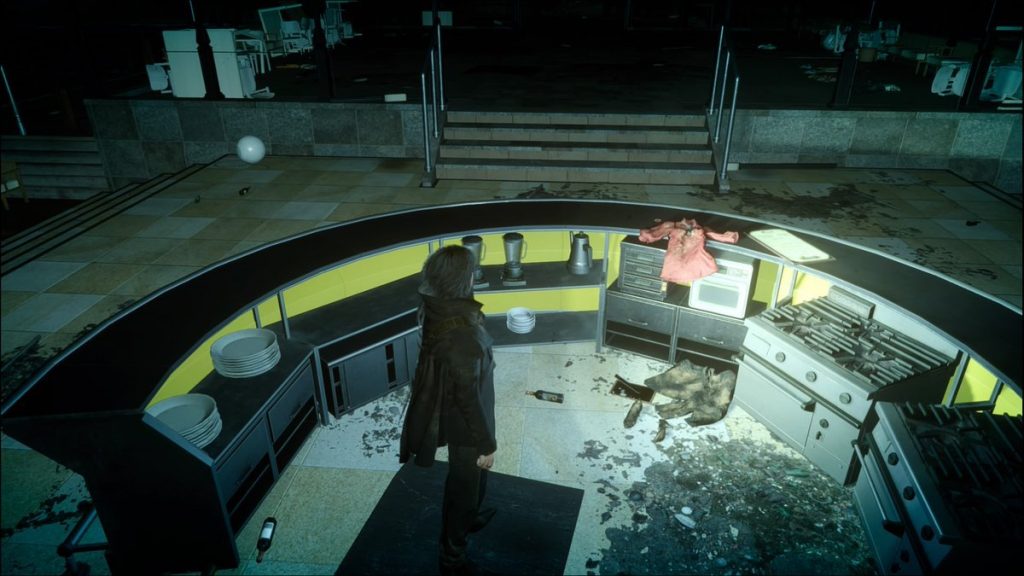
What sort of daemons they became, and what fate befell them after they turned, is unknown — though the presence of Tonberry daemons wielding chef’s knives around Coctura’s old station may tell us all we need to know of the perky culinary artisan’s transformation and whereabouts.
Whether the two endearing NPCs lived long enough as daemons to see the return of the Light or were killed by Hunters in the preceding ten years — or even by Noctis himself when he returned — is left a callous mystery … as is whether the Dawn would have cured them or incinerated them if they made it that far.
Daemons over Gralea
Recall this 2014 trailer for FFXV, and specifically refresh your memory of the portion depicting a flying creature moving across a backdrop of an industrial environment and red skies (see 3:53-3:57 in the video). This development and aesthetic was seemingly dropped altogether for the final game.
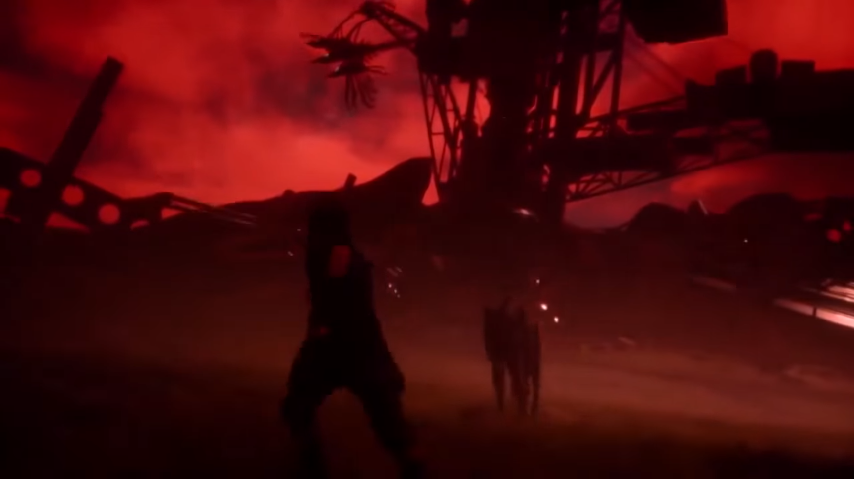
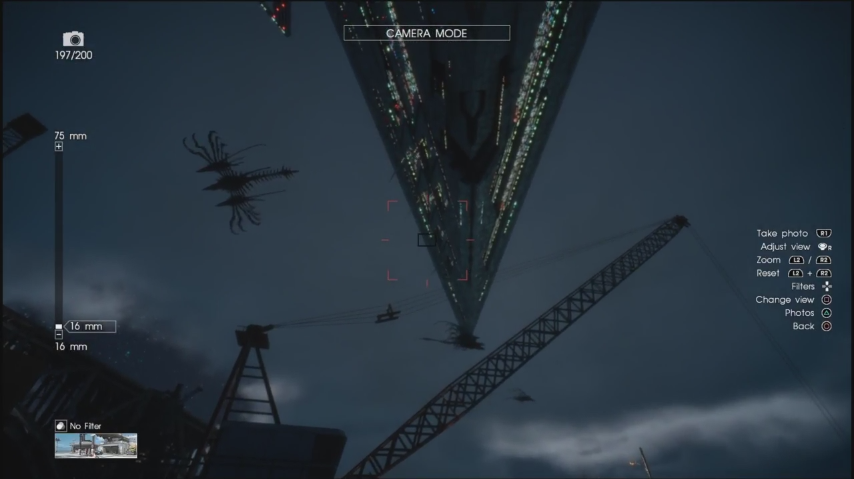
As this gameplay video from fan LuxValkyrie shows, however, the same flying creatures can be seen — but also easily missed — in the final game flying over Gralea early in Chapter 13. The presentation of the Starscourge was most likely also altered from red skies to the blanket of darkness seen in the game at release.
Gralea was built in a crater
A detail not so much overlooked but rather simply all but impossible for players to even notice normally is that Niflheim’s capital city sits nestled in an enormous caldera of unknown origin. This knowledge is best gleaned by traveling to the site where Gralea should be while glitching outside normal gameplay boundaries (during a chapter other than Chapter 13).
Rather surprisingly, this daylight image of the city used for the in-game Empire of Niflheim loading screen is no more clear about the nature of Gralea’s environs than is normally the case:
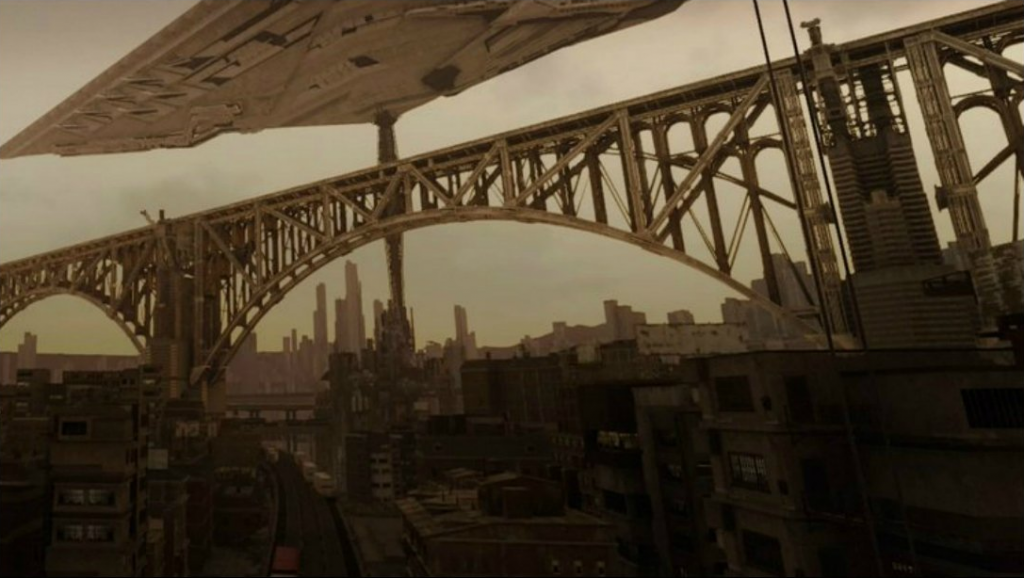
Likewise, the shot of the Dawn embracing Gralea in the game’s ending offers little more perspective — though it does offer a little more:
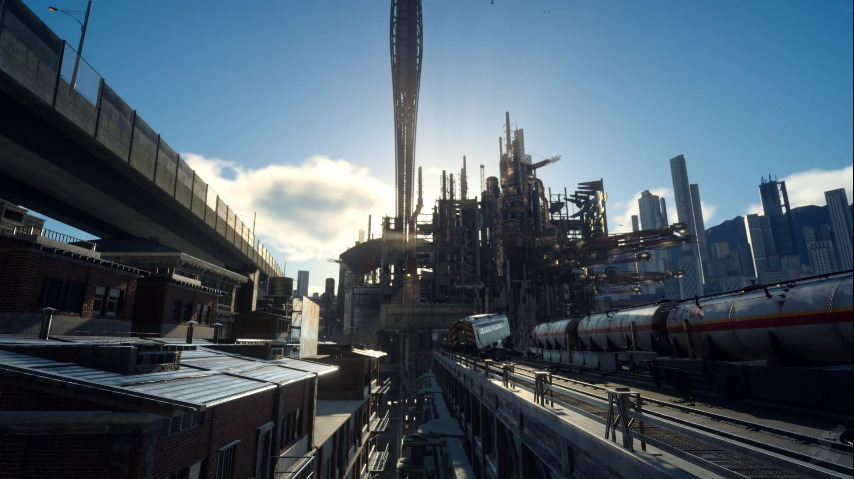
The rim of the caldera is visible behind some buildings on the right side of the shot, but it’s arguably only obvious here if one is already aware of what they’re looking at. Otherwise, it could as easily appear to be peaks along a nearby mountain range.
Not to give the wrong impression with this analysis, that same observation can be made while playing the game during Chapter 13 — but it’s even less definitively a caldera rim than a mountain range when viewed at night:
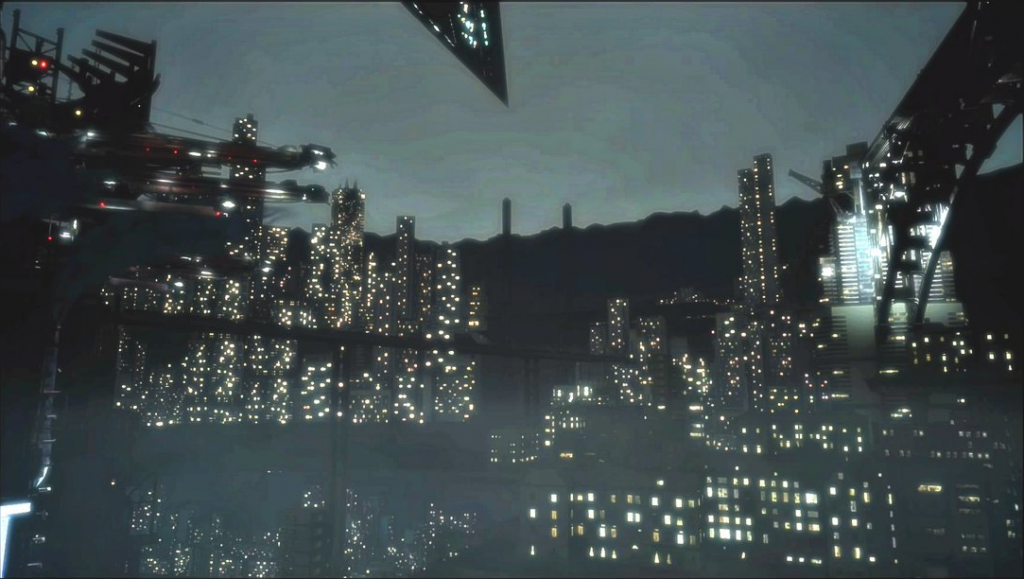
Oddly enough, the in-game map actually offers players the best indication of Gralea’s surrounding geography. Again, though, it’s arguably only obvious even in this image if one is already aware of what they’re looking for:
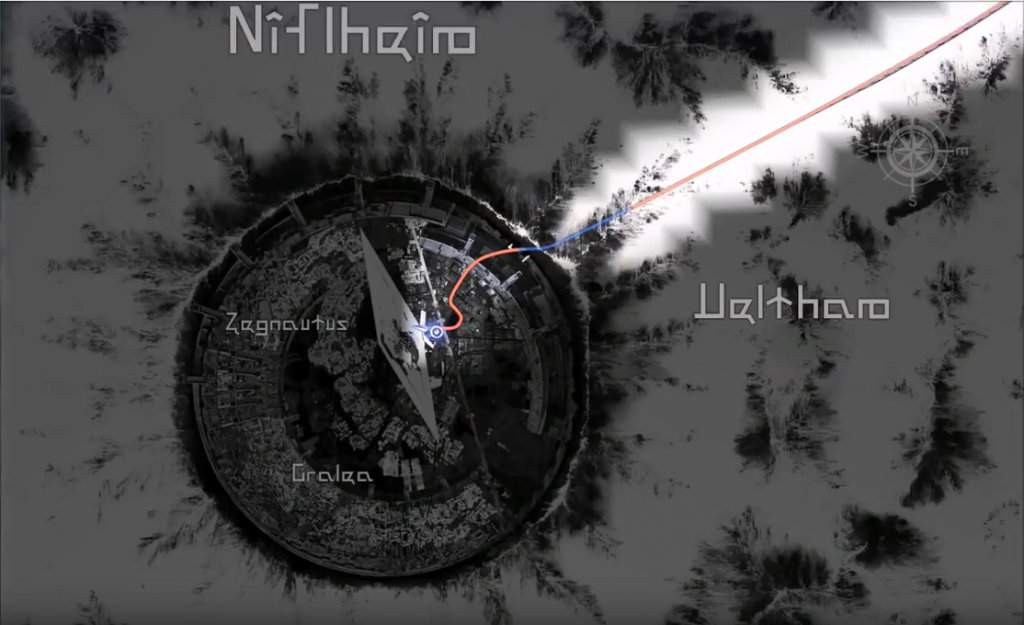
In the event, by the way, that the glitch-assisted exploration screenshots above aren’t clear or convincing enough, the following videos from fan Caelum Rabanastre XII/XV should adequately address concerns:
• “Final Fantasy XV – Out Of Barriers – Exploring Gralea (Quite the Disappointment)”
• “Final Fantasy XV – Out Of Barriers – Exploring Ghorovas Rift (Area With Shiva) In Daytime”
• “Final Fantasy XV – Flythrough of Niflheim on Ver. 1.10”
• “Final Fantasy XV – Finally Exploring Gralea With Armiger!”
Whether caused by a devastating meteorite impact or an unrelated cataclysmic volcanic eruption is unclear, but the area under and around Gralea is most definitely a bowl. Why the developers didn’t ensure this detail would be more readily visible, however, is a complete mystery to this fan.
The Citadel’s Crystal chamber
Continuing what has become something of a theme in this section of our archive, another observation most players will be unlikely to make on a first — or even second — play is that the hole blasted into the Citadel’s Crystal chamber in “Kingsglaive: Final Fantasy XV” is actually visible in the main game:
The hole faces east, the same side of the Citadel where the courtyard is found, as shown starting around the 7:25-mark in this video.
Ignis’s opinion of Prompto
One of this fan’s favorite observations about this game is the bonds of friendship that grow not just between Noctis and each of his friends, but also the bonds his companions forge with one another. In particular, the friendship between the earnest Prompto and Ignis, who had initially been rather dismissive of him, is touching.
When Noctis and his friends’ adventure begins, Ignis sees Prompto as little more than a passenger — a step above luggage certainly, but nonetheless inessential. The Conversational Chemistry formula the developers referenced in crafting the many in-game conversations that are heard during the journey even states this outright:
Unambiguously, Ignis’s assessment of the royal retinue’s gunman is that he was “expendable.” And indeed, more than one exchange among the Chocobros unabashedly reflects that opinion:
Gladio: Hey, I’m gonna hit the shop.
Prompto: Yeah, let’s stock up on everything!
Ignis: We can make room by leaving you behind.
Prompto: Smell that fresh air—makes you feel alive!
Noct: Yeah, don’t get used to it.
Gladiolus: Why is everything such a big deal with you?
Ignis: Let him have his fun, while he’s still alive.
Prompto: Wonder if I’ll ever get the hang of all this fighting.
Gladio: Sure you will, if you live long enough.
Ignis: I wouldn’t count on that myself.
Among the many driving animations the Chocobros exhibit, one even features Prompto and Ignis apparently arguing, as seen in this video.
It isn’t clear precisely when Ignis’s attitude toward Prompto began to change, but change it does. That becomes particularly clear after Ignis’s blinding, at which point the younger man’s compassion compels him to take a preoccupation with Ignis’s well-being — the first examples of which can be seen at the very end of Chapter 9 and beginning of Chapter 10 when Prompto guides Ignis at the docks, then remains with him during the train ride to Cartanica.
The two also remain together talking during the dreary camp in the Fodina Caestino while Noctis and Gladio seclude themselves and remain silent. Soon thereafter, Prompto defends Iggy’s right to choose whether he remains with the others to continue the journey.
Perhaps most poignantly, Ignis appears quietly devastated after Prompto falls from the train near Eusciello. Though he maintains his composure when Noctis informs him they’ve lost their friend, should the player have Noct and his remaining friends sleep on the train at Tenebrae, Ignis will be seen holding himself in what looks to be a fetal position — his once stiff, measured and dignified posture completely broken:
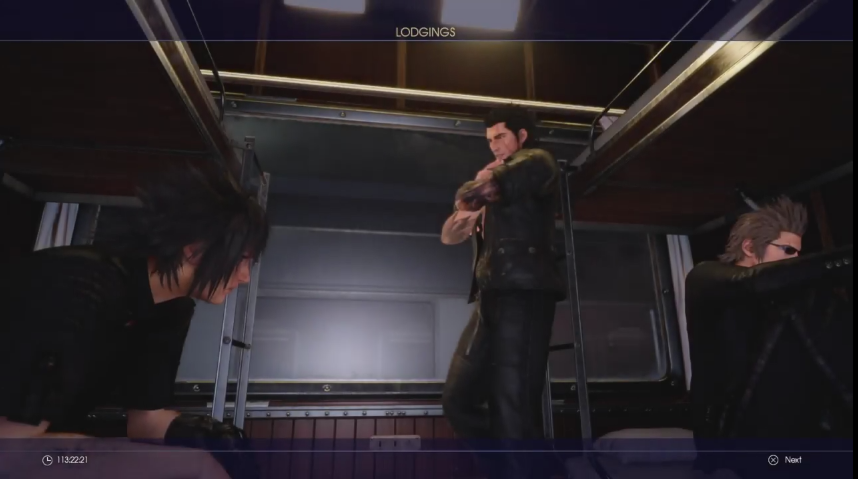
After he was initially blinded, Ignis had still maintained something of that in the way he carried himself. Even as he lay in bed on the train at Cartanica (should the player choose to have Noctis and the royal retinue do so), he merely put the back of his hand across his eyes:
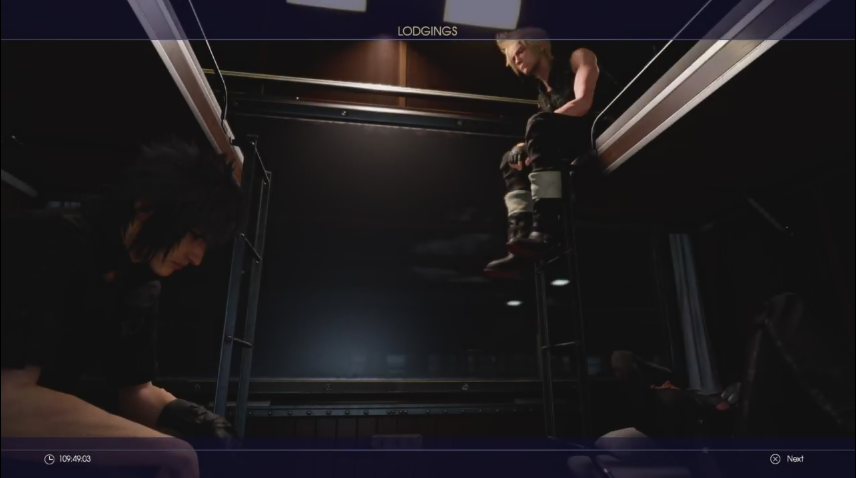
Just as Noctis developed a powerful, heartfelt friendship with both Prompto and Ignis, they forged one with each other.
Did all four Chocobros die during the ending?
If there’s one aspect of Final Fantasy XV’s story for which it wouldn’t be an exaggeration to file under “Hotly Debated,” it is the final scene of the four Chocobros together around a campfire while Noctis struggles to find the words to tell his friends how much they mean to him.
To some, this is the denouement to Noctis’s tragic passing, made all the more sorrowful because his friends have died and joined him in the afterlife while fighting off daemons to buy him time to defeat Ardyn on the spiritual plane. Others correctly interpret it for what it is: A flashback to the final camping scene that took place in the time between the royal retinue leaving Hammerhead and arriving at Insomnia for the final battles.
Notice, however, that this analysis is not saying the Chocobros definitively did not die during the ending. Of that particular interpretation, it is the opinion of this fan that it falls just short of utterly implausible and squarely at odds with what the narrative was trying to build in that final chapter (the reasons for this to be demonstrated later), but it is not quite beyond any and all reason. That the final campfire scene is set in the afterlife? Yes, that is rather definitively and demonstrably incorrect, but these are separate topics up to a point — both of which we shall address.
Let’s start first with that campfire scene. It’s not difficult to see why one may take the interpretation that this scene is set in the hereafter if — having taken note of visions of Noctis’s friends and father briefly appearing beside him as his spirit confronts Ardyn’s — they suspect or have already concluded that all four of the Chcobros died. The campfire scene then framed as it is on one side by Noctis’s spirit passing on while on the other side we have a wedding scene between he and Lunafreya in the afterlife, it doens’t seem unreasonable on the first pass.
Between the campfire scene and the wedding scene, there’s even a shot of the Chocobros’ camping chairs sitting empty on the hill overlooking Insomnia, as though their souls met here for that last conversation, and then abandoned the camping gear they no longer needed.
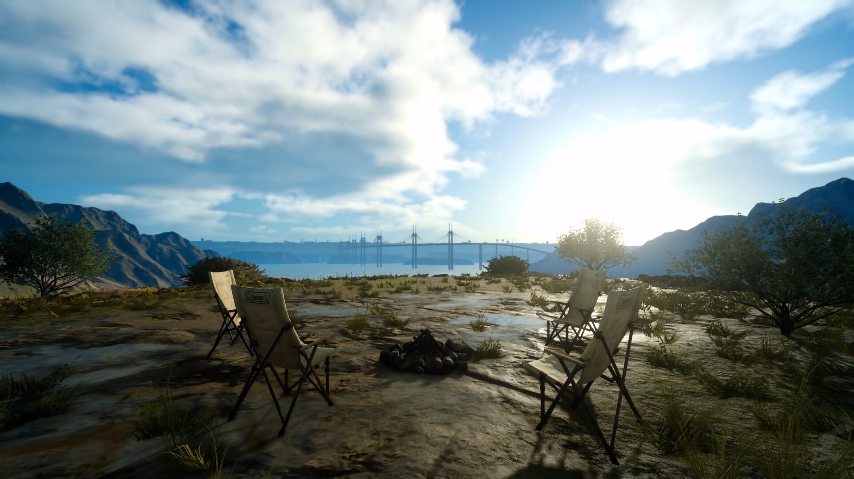
Again, with the suspicion that all four are already dead, this seems a rather straightforward progression of events: Noctis and his friends die, they reunite as spirits, then Noctis and Luna get married in the afterlife.
https://thelifestream.net/wp-content…utnumbered.png
In this scene by the fire, we can also plainly see that Noctis isn’t wearing the Ring of the Lucii, which we saw destroyed at the same moment his spirit passed on. Ignis, Prompto and Gladio, meanwhile, are then nowhere to be seen as the Dawn rises and the Light is restored to Eos. We even have Noct telling the others “seeing you here, now, it’s…more than I can take.” If that doesn’t sound like sorrow at finding that his friends have followed him into the afterlife, what does?
Well, dear reader, that line doesn’t sound that way at all when taking stock of it in context. Upon a more comprehensive look, Noct says, “I’ve made my peace. Still… Knowing this is it, and seeing you here, now, it’s…more than I can take.”
“I’ve made my peace.” “This is it.”
Were “Family Feud” to do a survey asking for things a person might say in anticipation of their death, both of these would be on the list. Noct is quite simply saying that he’s made peace with the fact that he’s going to die, but knowing the battle that will claim his life is about to begin, and being with the friends he loves so dearly in this moment that calls to mind happier days, he’s finding it difficult to push forward. It’s really that simple.
Noctis isn’t wearing the ring here because, well, he just isn’t. He wasn’t wearing it before the Chocobros walked into Insomnia. We see him put it on in that scene where the four look up at the Citadel, shortly after Gladio says “Home, sweet home.”
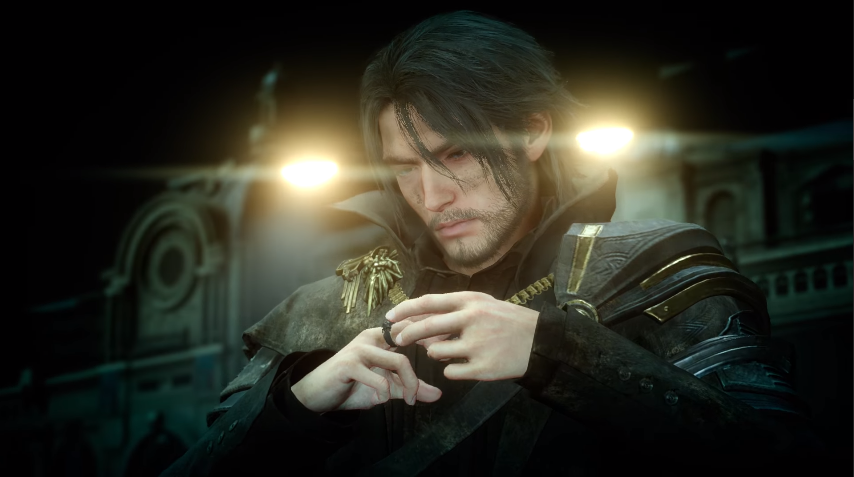
We know they had been camping right before that because we see that too, and because the on-screen summary of events between them eating together around the campfire one last time and walking into Insomnia is “After ten long years of solitude, Noctis is reunited with his friends. Breaking camp for the final time, they return to the Crown City of Insomnia, where the Chosen King will make his stand and restore the Light to the world.”
During this transition, we even see their abandoned camping chairs — which they’ve already left behind before the battles in Insomnia even begin.
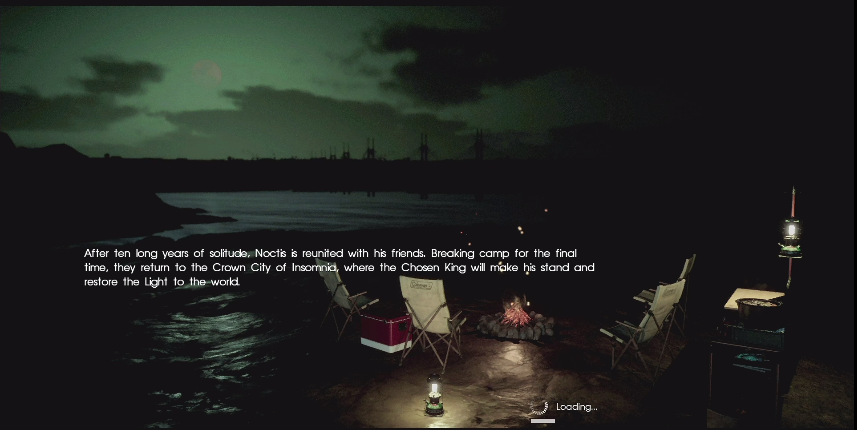
Notably, though, we can also see in this shot that there was gear other than the chairs left here when the Chocobros broke camp. Post-credits, as we see the Dawn enveloping the world, we see only the chairs. Who moved the other gear, if not Noctis’s friends? And who else would have taken all but the four chairs, as though leaving them in tribute or as something sacred?
At this point, we’ve unavoidably meandered into discussing not just the nature of the final camping scene, but also the plausibility of Noctis’s friends having died while defending him.
In line with that, before we fully delve into the questions raised by the Chocobros’ camping gear (of all things), let’s quickly revisit the observation that Ignis, Gladio and Prompto aren’t seen once the Light is restored, as well as the observation that images of them do appear alongside Noctis after he has died.
First and foremost, the fact that Noctis seems to take absolutely no notice of discovering his friends to be dead here — despite it supposedly being “more than I can take” during the campfire scene — is a major strike against the possibility that they are actually present. Based on a number of lines in Chapter 14 (we’ll examine them soon), neither Noctis nor the player was being set up to expect that. In fact, it’s precisely the opposite. That in mind, such a revelation would have warranted more.
What we have at work in that brief shot is a simple case of classic symbolism that Noctis’s friends were with him through it all while the villain was alone. Note that it is Ardyn rather than Noctis who seems to see the others.
Moving on to their absence as the Light returns to the land, and ignoring any possible ramifications that seeing anyone moving about during this sequence may have had on the director’s vision for a somber, sobering ending, it must be acknowledged that we don’t see anyone around Hammerhead as the Dawn arrives there either … yet we certainly wouldn’t take that as an indication Talcott and everyone else last seen there must have died. Likewise, Lestallum — humanity’s last refuge — is devoid of activity when we glimpse it during the ending, but we know it to be “packed to the gills now,” as Gladio put it during some exploration dialogue in Chapter 14. And returning to the matter of the camping gear, signs of the bros are very much shown even if they are not.
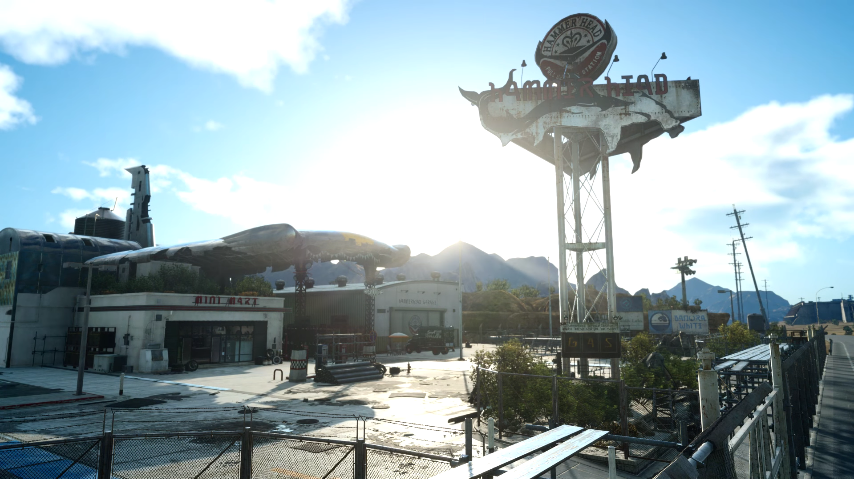
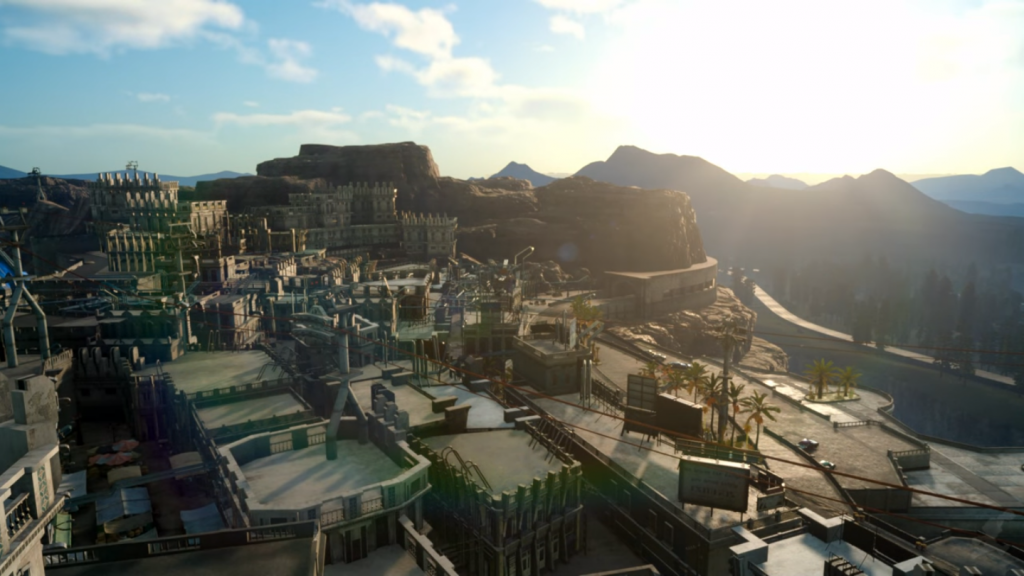
Now, one may argue that the additional gear wasn’t included in the final shot of the hill due to an animation oversight, or equate challenging what we plainly see between those two shots of the final camp (i.e. less camping stuff) with challenging what we plainly see when Noctis’s friends appear alongside him in the hereafter. On the surface of it, this seems like a good point: An insistence upon an unverifiable animation oversight is really much the same as an insistence upon unverifiable symbolism, isn’t it?
Perhaps in other situations it would be, but not here. One reason being: such grand visual symbolism is already used more than once in FFXV before this, and to even more extravagant effect. One doesn’t think the imagery around Noctis and Luna as she died were their literal surroundings, nor would they think Noctis and Luna came back from the dead during the post-credits segment of the ending, got married, and became king and queen during what was actually Noctis’s funeral.
Along similar lines, in “Episode Prompto,” the eponymous lead wasn’t literally pointing a gun at himself while simultaneously laying on the ground having the same gun pointed at him. He also didn’t literally meet his child self in a separate body, nor did he revert to how he had looked as a child, go back to Insomnia to sit on the Citadel steps, and then see Noct, Gladio and Ignis walk by him as adults. He also didn’t suddenly turn back into an adult after reading a letter from a dead girl delivered to him by a dead dog.
It’s also just plain odd to insist on symbolism (i.e. meaning) applying to the empty camping chairs while insisting there is no meaning (literal, symbolic or otherwise) to the absence of the associated camping gear seen with them previously. Conversely, insisting that the imagery of Ignis, et. al. appearing alongside Noctis as he fulfills his destiny means something different from a literal interpretation of their presence — rather than insisting that it has no meaning — is qualitatively a different kind of argument altogether.
Even more to the point, an equivocation doesn’t hold up between insisting the missing camping gear is an oversight and insisting the Chocobros appear alongside Noctis as symbolism due to one simple observation: If the shot of the abandoned chairs is supposed to be what the final camp scene stands out as being more connected to, and it does this via symbolic imagery, then why is it still so obviously connected by literal imagery to that pre-Insomnia transition screen, where all the gear is in the same place?
Added to that, why is there food cooking behind Ignis in the supposed afterlife scene? And does it not make more sense that they’re all dressed precisely the same as they were during that last campfire meal because this was right before that last campfire meal?
In the interest of fairness and good faith, at this juncture, it needs to be acknowledged that one can obviously still subscribe to the idea that the Chocobros all died without assuming the final campfire scene couldn’t be a flashback to before “The Cure for Insomnia” segment of Chapter 14. There is no intent here to conflate theories or those who hold them.
For some, the other three Chocobros appearing alongside Noctis and his father — both of whom have undeniably died by that point — in the realm beyond only seconds before Lunafreya, who is also inarguably dead, is sufficient to establish that they all are. Particularly so given that Noctis, Lunafreya and Regis also all prove they’re truly present by neutralizing Ardyn. (Of course, the fact that the other three do nothing should then be considered evidence to the contrary regarding how literal an interpretation of their presence should be taken.)
The question of what happened with that other camping gear still remains for any “the Chocobros all died” theorist to answer, including those arriving at that conclusion based only on the sequence depicting Ardyn’s final defeat.
Theorists arguing for this interpretation must also contend with the question of why it is only now — when their circumstances are so much less dire than in the past — that these three should go down fighting daemons. They survived their much more bleak circumstances in Zegnautus Keep when Noctis was forced to leave them behind in that cargo area while they were being swarmed by daemons. They survived escaping that fortress altogether and getting back to Lucis in a world already enveloped by an unending night. They even then made it another ten years as daemon hunters in this world now plagued by darkness without relief.
Even Ignis was said to hunt alone in the World of Ruin, for goodness’ sake! Prompto too, who had begun the journey with so little training.
We won’t seek to belittle the notion at hand by wryly asking how these three seasoned warriors fell to only a handful of Iron Giants after surviving all they had been through (we only see a total of five manifest before the scene ends, but it’s probable more were coming). We will, however, emphasize the need to understand what makes this situation — where they need only last a few minutes — so different from anything they had to make it through in the preceding ten years.
At least one suggestion actually has been presented for this question, the proposal pointing out that, after Noctis died, it was still another moment before his spirit was able to neutralize Ardyn’s — the implication being that, if the Dawn didn’t come until Ardyn was fully dealt with, the Chocobros still alive may have been left to fight without the benefit of Noctis’s magical powers, which he had always shared with them.
This isn’t as much of a problem as it may sound like, though. In the first place, we have no reason to believe they had been accustomed to relying on Noctis’s powers for their survival in the World of Ruin. Truthfully, we don’t even know whether they had access to his power during the ten years they were without him.
Sure, Prompto conjured his weapon to shoot Ardyn after Noctis was pulled into the Crystal, so they seemingly still had the gifts he shared with them, but we don’t know that this continued after he entered his hibernation to receive the Crystal’s full power.
Even if the magic loan did continue, though, how big a deal is that really? While we can’t know for certain whether they were unable during those ten years to use the powers Noctis had been sharing with them, these wouldn’t have amounted to much — and certainly not the sole reason for their survival. We never saw them be terribly dependent on the ability to warp in the first place, and whatever magic-infused items Noctis may have left with them when he disappeared, we can be certain they didn’t have access to him to create new ones for them — as well as be reasonably confident he didn’t leave them with sufficient enough supply that they would be still dependent on his magic after ten years of living in a world infested with daemons.
The ability from Noct we can expect his Kingsglaive would have made the most use of is the simple conjuring of their weapons. Hardly a make-or-break ability for theit survival — unless, of course, they were to lose access to their weapons. That nightmare scenario doesn’t apply to their situation when last we see them, however, as they have already conjured their weapons before the scene even ends.
Another question for fans advocating the death of all Chocobros is what to make of the narrative cues being dropped throughout Chapter 14 — the ones that should make Noctis’s friends dying completely unexpected for us and him if such a thing occurred.
Consider these exchanges:
Noctis: So Ignis, you’re really cooking like you used to.
Ignis: More or less. I can manage with far less help than I required before.
Prompto: Y’know, it’s okay to ask for help. You don’t need to prove anything to us.
Gladio: Probably more about proving it to himself. I say we leave him to it.
Prompto: Yeah, I guess that’s how he got so good. Even better than before, if you can believe it.
Noctis: My taste buds sure do.
Ignis: Perhaps I’ve developed a culinary sixth sense.
Gladio: Hey, Iggy. You oughta follow Weskham’s example, open up a restaurant.
Ignis: I’ll give the matter some thought—assuming such demand still exists in a post-apocalyptic world.
Gladio: So yeah, no wedding just yet.
Prompto: No wedding ever.
Noctis: Go figure.
Gladio: Hey, don’t hate me.
Prompto: “Hate the game.” Yeah, yeah.
Ignis: So we can’t expect a formal introduction for some while, then.
Gladio: Yeah. At least not ’til all of this is over. Can’t in good conscience leave a girl to worry while I rush headlong into danger.
Noctis: Right.
Prompto: Gee, you oughta teach a master class in romance.
Ignis: Or acting.
Gladio: No acting here. I keep it real with the ladies.
Prompto: We’ve really upped our game as hunters, haven’t we? Cor sure ran us through the ringer!
Ignis: Even Aranea’s been taught a thing or two.
Gladiolus: It won’t be for naught. There’s still gonna be cleanup when all is said and done.
Noctis: Yeah, I’m sure you can handle it.
Noctis: Ignis, can you…sense light?
Ignis: To a degree, yes.
Noct: So when dawn breaks, you’ll know it.
Ignis: I should.
Noct: Good to know.
Noctis is expecting his friends to survive. He’s taking comfort in such things as the notion that Ignis will know the moment the Dawn returns — which will mean Noctis has died.
The narrative itself expects them to survive. It’s building to Noctis’s farewell to them: “Walk tall, my friends.” Believing that his friends will get to live out the lives they deserve is the only reward he can expect for what he’s about to do. If he was denied that before even accomplishing his mission, it’s nothing short of absurd to think he would have had no reaction to it.
These lines aren’t really comparable to the dramatic irony in “Episode Prompto” from Noctis’s conversation with Prompto about building a better world once everything is settled. In that case, the player is expected to have already completed the main game and seen the fate that befalls Noctis.
Trying to work that same effect into what Chapter 14 was building up would only amount to a bait-and-switch that distracts and detracts from what the narrative could accomplish with Noctis’s death alone.
There’s such a thing as too much when it comes to death in a narrative that wants to convey a signature idea such as the inevitability of childhood’s end or the simultaneously reassuring yet unforgiving relentlessness with which life goes on — both of which are ideas one could easily justify reading into the narrative of Final Fantasy XV.
They could get across something like that with the one death here, but any more than that would dilute it, plain and simple.
A final point: Just as it doesn’t ring true to imagine that Noctis would have had no reaction to finding his friends suddenly alongside him in the spirit realm before vanquishing Ardyn, it doesn’t ring true that they would not have been present for the spirit wedding in the game’s very final scene — if they were also dead.
Not to belittle the significance of the relationship between Lunafreya and Noctis, but the bond between Noctis and his brothers was always most at the heart of the game. There’s absolutely no thematic justification for them not sharing the final scene if they were still on the same side of eternity.
On the evening of August 25, 2017, at an event in Cologne, Germany called “A King’s Night,” FFXV director Hajime Tabata confirmed, in response to a fan’s question, that Gladio, Ignis and Prompto did not die during the ending.
A September 13, 2017 Kotaku article written by Jason Schreier featured a conversation with Hajime Tabata in which he confirmed for a second time Gladio, Ignis and Prompto’s survival. Furthermore, with the March 6, 2018 release of “Final Fantasy XV: Royal Edition,” an extended credits sequence became available in which the three are definitively shown walking through the ruins of Insomnia as the Dawn blankets the city.
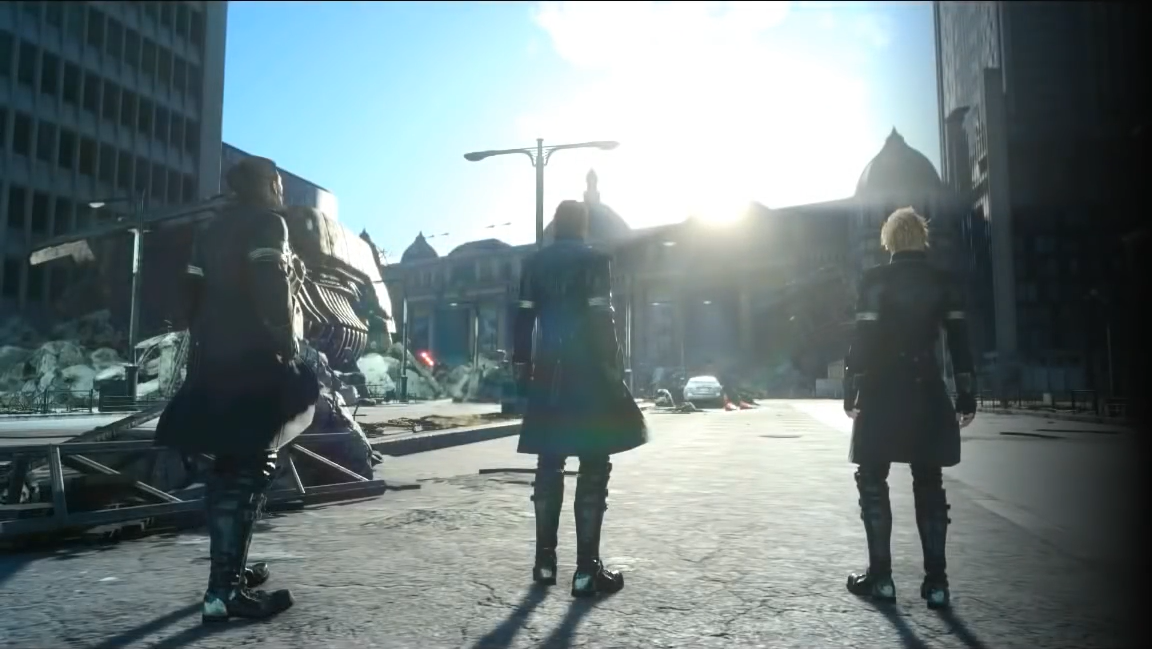
Why don’t all the Chocobros warp?
From as early as the first time the player makes camp, Prompto can comment on a photo of Noctis using his warp ability with the sentiment, “Why can’t I warp, too? So unfair.” This line can be a matter of some confusion, as the other Chocobros’ ability to conjure weapons comes directly from Noctis sharing this power with them, just as the Kingsglaive members’ ability to warp in their eponymous movie came from King Regis sharing his power to do so with them. That being the case, Noct’s companions then should be able to warp as well — and, in point of fact, they are.
All four Chocobros are explicitly shown warping during the special parry move that can be performed during the Adamantoise battle, as seen in this video. All of them also warp when Armiger Chain is activated, as seen here. Finally, specifically Prompto is seen warping during the Final Fantasy XV VR Experience reveal trailer from E3 2016.
It very well may be that Prompto’s dissatisfied sentiment relating to warping was only meant to apply to the beginning of the bros’ journey, when the comment can first be heard. Perhaps he (as well as Ignis and Gladio?) had little or no experience with warping at that point, and so he said “can’t” not because he was absolutely incapable but instead due to the fact warping is a grueling technique requiring training to use effectively.
Obviously, the main reason Noct and his companions aren’t all constantly warping about the battlefield is due to gameplay considerations rather than game lore — the screen would simply be too chaotic and battles too confusing if there were four sources of spectral trails and afterimages.
Alternate scenes in Version 1.00
Alternate versions of several of Final Fantasy XV’s most significant scenes exist in the game’s barebones Version 1.00. For example, in this original version, Bahamut spoke in the language of the gods.
It was only after Version 1.01 was applied that the vaguely dragon-like being began speaking the common language. When playing the game without having installed updates, it becomes possible — among other things — to hear Bahamut speak the mysterious language of Eos’s deities when Noctis meets him at the end of Chapter 13 (see 12:20:00 in this video).
A somewhat less (though perhaps more so to some players) important change can be seen near the end of Chapter 1 when spending the night at Galdin Quay in anticipation of departing for Altissia the next day. Most players, having played the game on at least Version 1.01, will witness a series of clips from “Kingsglaive” depicting the fall of Insomnia before Noctis awakens in the morning to Prompto’s greeting (see this video). For those who did play Version 1.00, however, imagery of the horrors taking place in Noctis and co.’s home city were skipped entirely, with Noctis simply being greeted by Prompto after a brief fade to black (see this video around the 1:17:30 mark).
It is also possible in this version to see a slightly different version of the final camping scene that plays right before the end credits. The original final camp scene has Noctis remain in his chair when he tells his friends “Well, what can I say? You guys…are the best,” with the camera slowly panning up away from the shot of the four and into the night just before he begins to say it (see this video; the scene begins at 18:23, and the specific part under observation takes place at 20:36).
In all updated versions, however, Noct stands to deliver this declaration, the camera focuses on his face, and it then cuts to black after he says “You guys…” — leaving “…are the best” to be said after a cut rather than the slow drift to black in the original version of the scene (see this video to compare).
There is also a very notable difference in Version 1.00 that can be experienced when Noctis hands Lunafreya the photo in the game’s post-credits ending sequence. When certain (as yet undetermined) conditions are met, Luna will gaze at the photo longer than usual and only turn when Noctis touches her face with his hand, at which point she will shed a single tear before they kiss.
This version of the scene can be viewed here.
As mentioned, the precise conditions to be met to trigger this alternate scene have not yet been verified. Despite some fans’ speculation and experimentation, it cannot be activated in any post-1.00 versions — not even when selecting the photo of Lunafreya’s wedding dress that Prompto will take in Altissia.
As seen in the video above (the only known recording of the alternate scene), it happened with a different picture entirely. Some players who have reported unlocking the alternate ending have also claimed they had Noctis select a photo to bring with him that wasn’t even taken in Altissia.
Notably, the stock photo of the dress also doesn’t get any special attention when selecting it. It elicits the same generic comments as other stock photos (e.g. “Really takes you back, doesn’t it? Makes you think about everything that came before, and after, too”). The photo from the video of the only known recording was also a stock photo, so it seems increasingly unlikely the final photo selection impacts this scene at all.
Assuming to be true the claims from these players who claim to have achieved the desired ending without using any photos related to Altissia, Lunafreya or her wedding with Noctis, it may truly be that activating the alternate scene doesn’t have anything to do with the final photo selection. This fan’s own speculation is that the elusive scene is achieved through a combination of playing on the correct update version of the game (i.e. Version 1.00) and sending Lunafreya only the most positive of messages via Umbra on the three occasions the player is asked to have Noctis send a reply.
The fact that the only video we have of this (slightly) different ending is that it was recorded with a webcam or something similar is another indication that this player may not have been playing with their game updated. Whatever other requirements may be involved beyond this remain unknown. Of those fans who may have attempted reproducing this teary ending post-Version 1.00 with consideration given to the various notebook responses and pictures selected, none have shown their results yet.
The player with a detailed walkthrough to come closest is RabidRetrospectGames (the player whose Bahamut video from Version 1.00 is linked above). They sent the most affectionate responses to Lunafreya via Umbra on all but the last occasion. This leaves one to wonder if they would have gotten the differing ending had they sent the most affectionate option that time as well.

